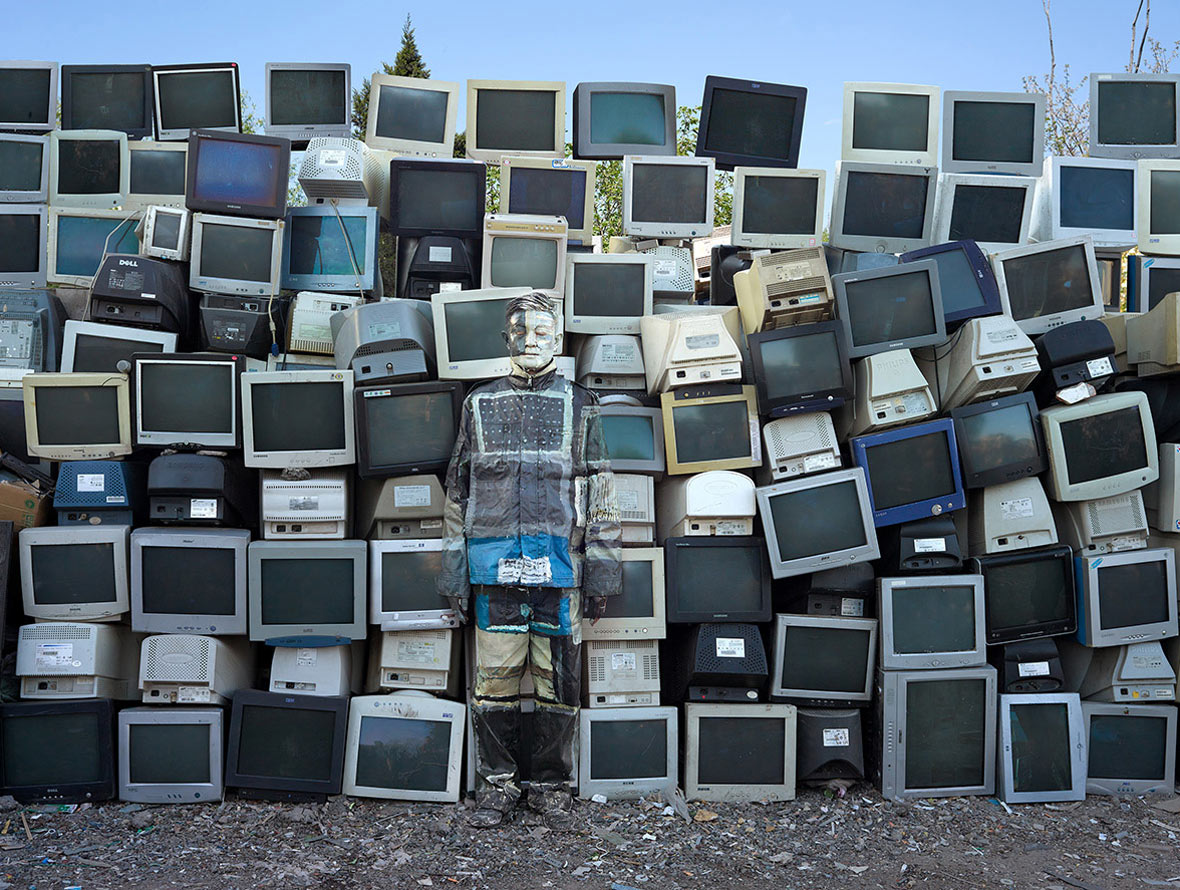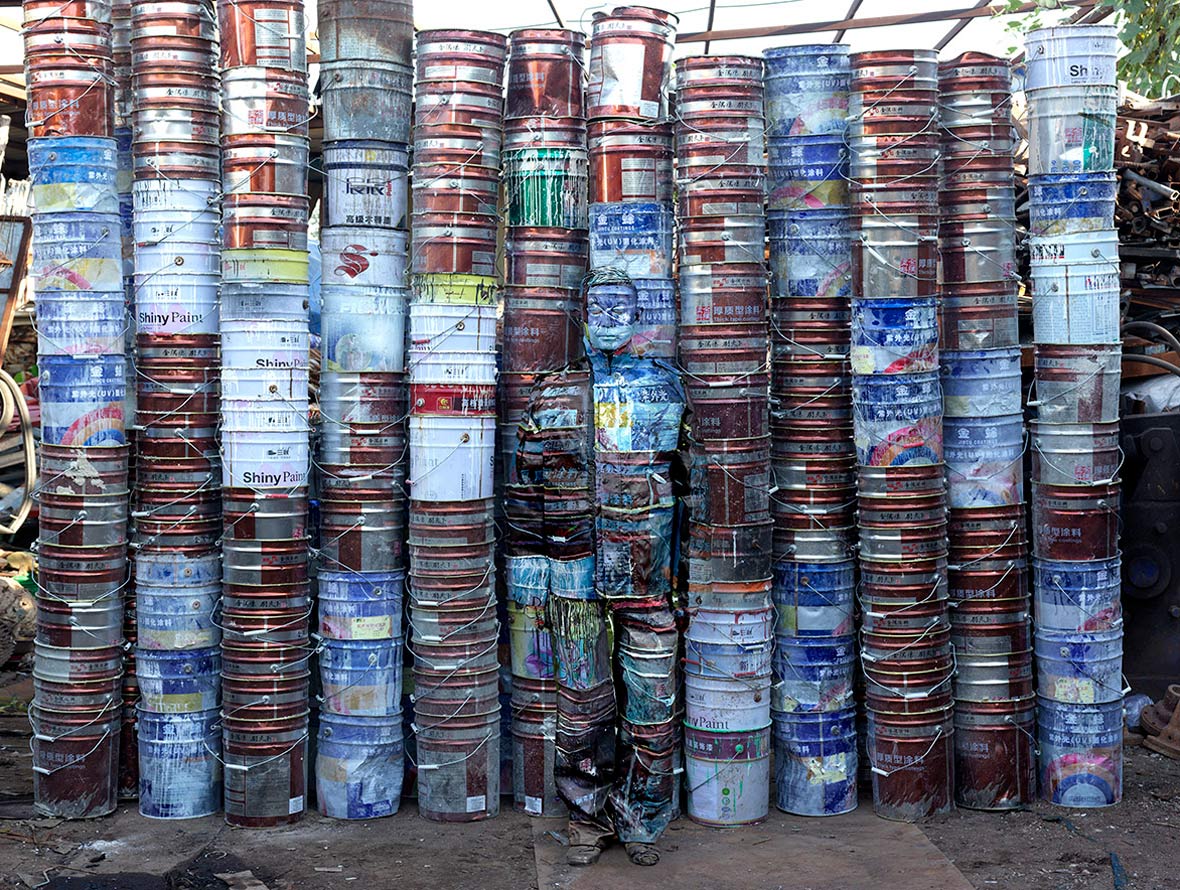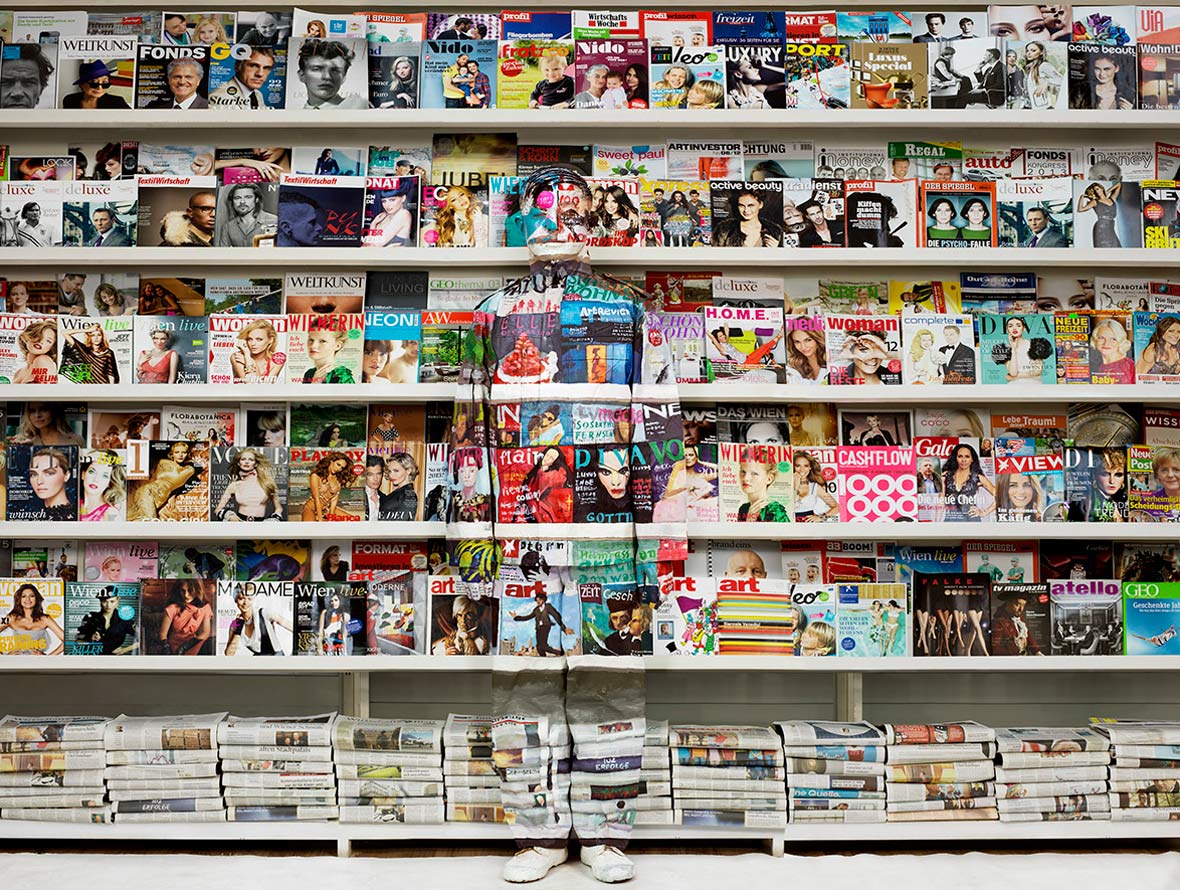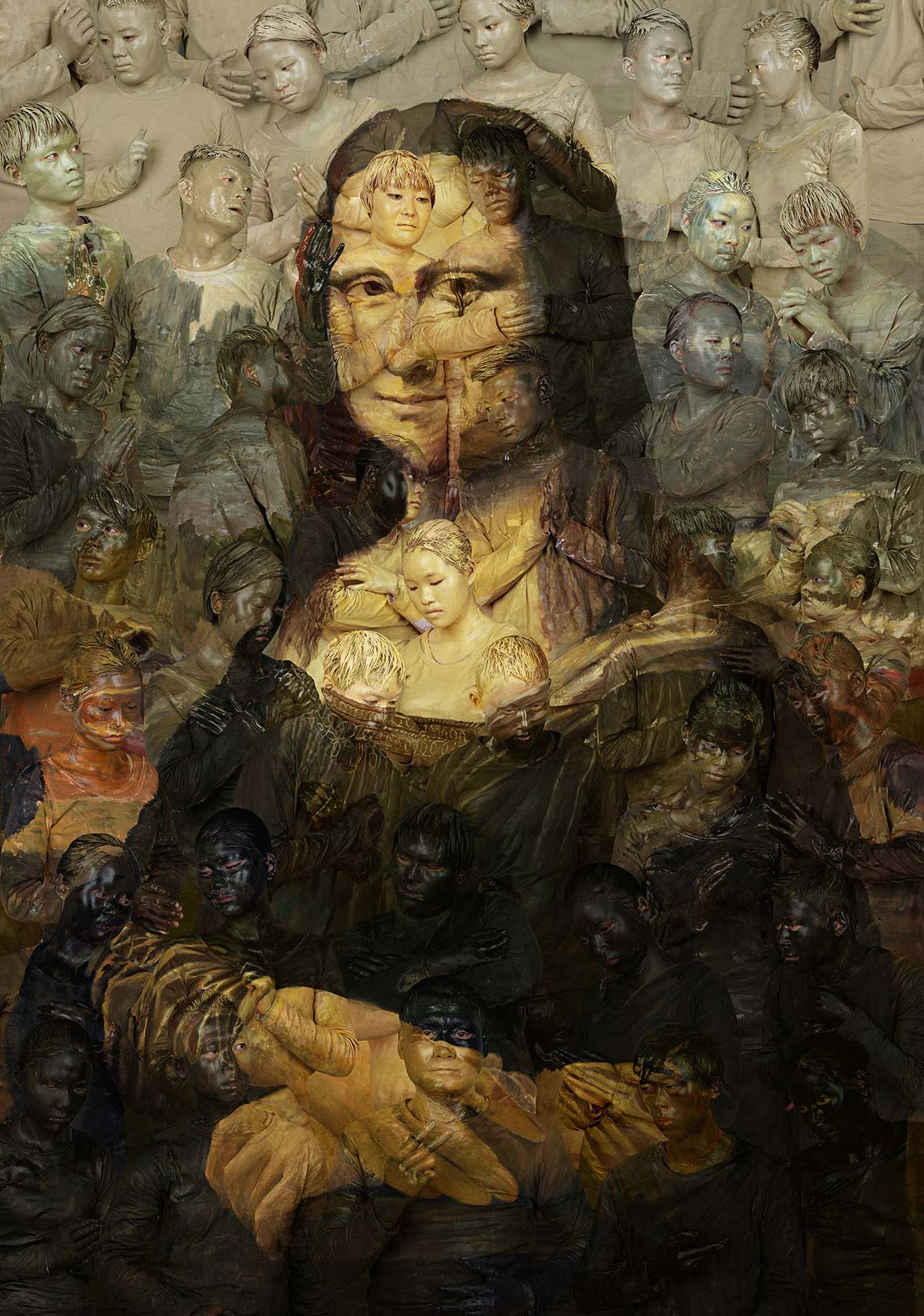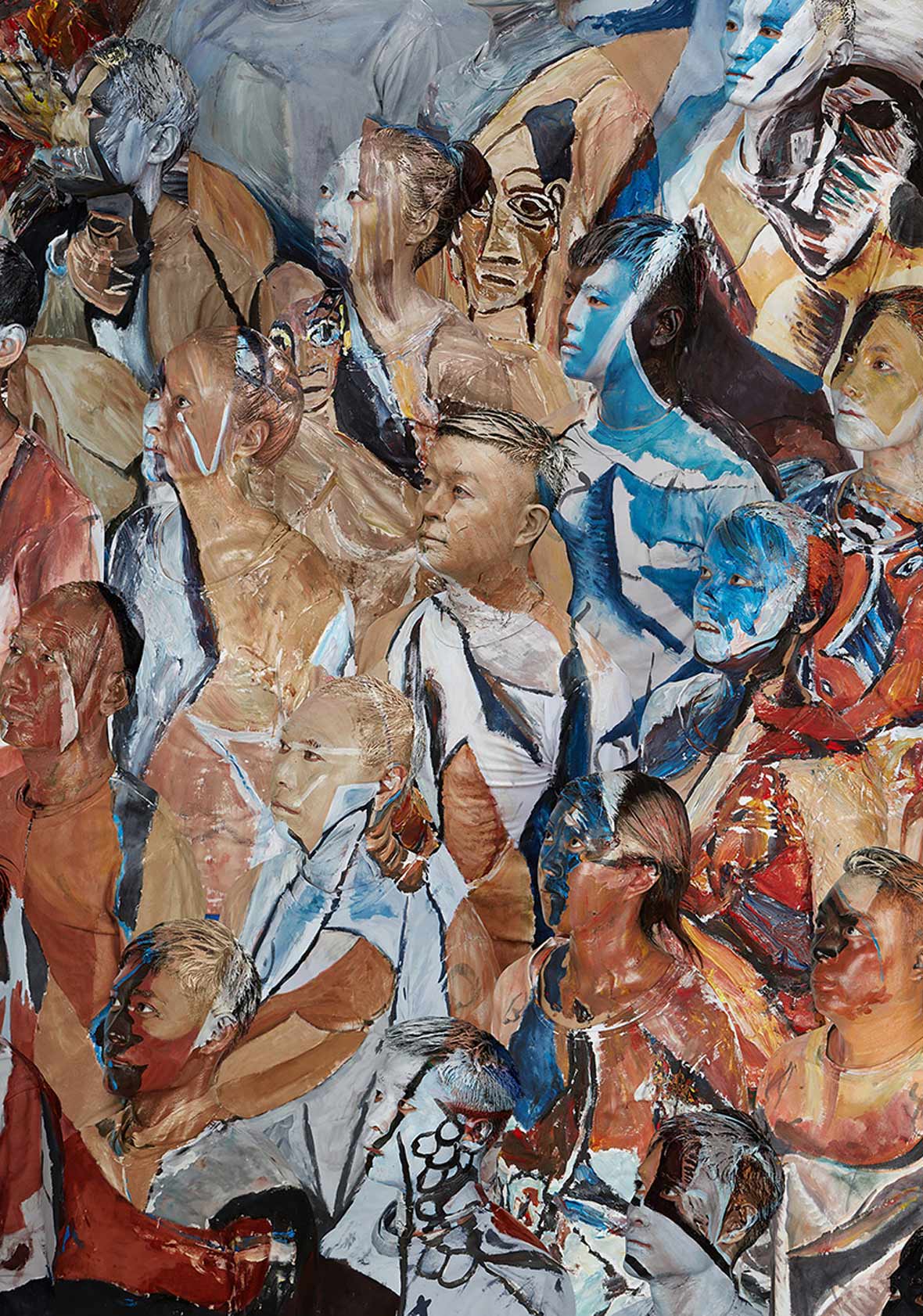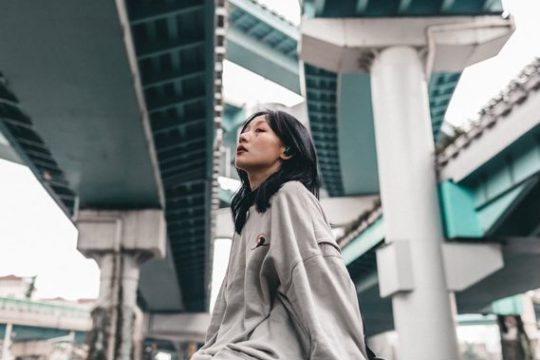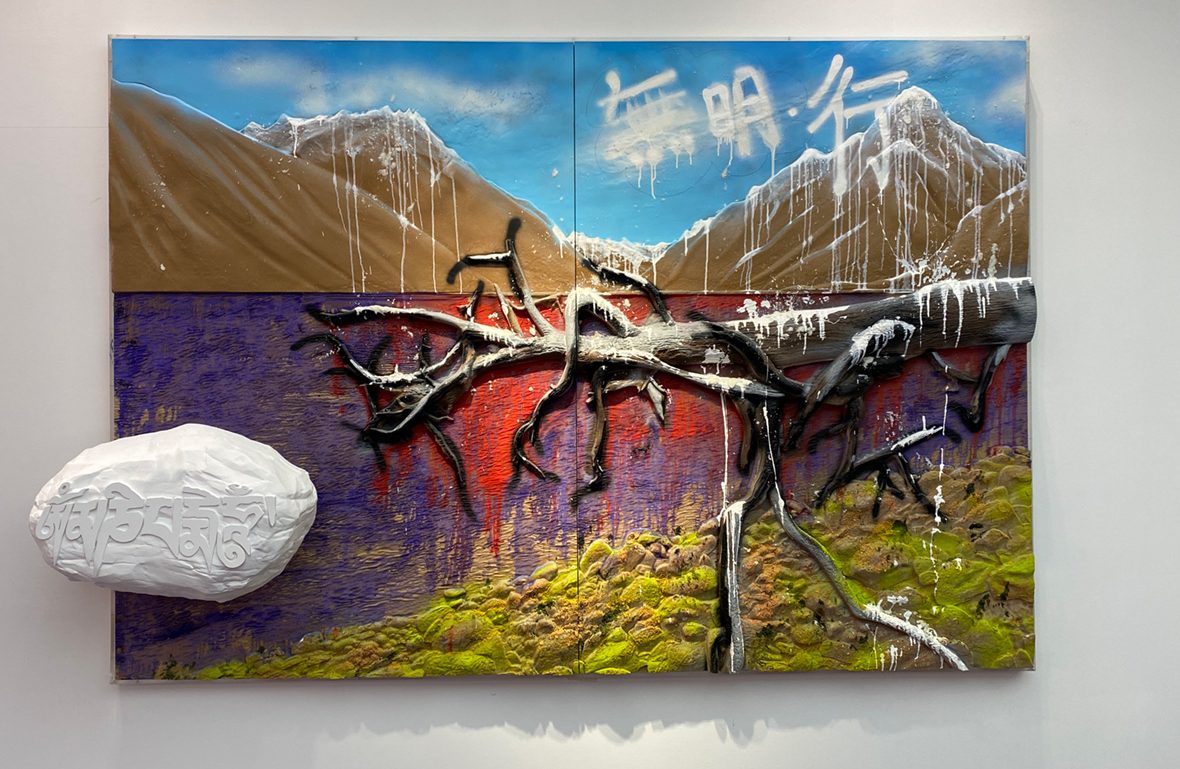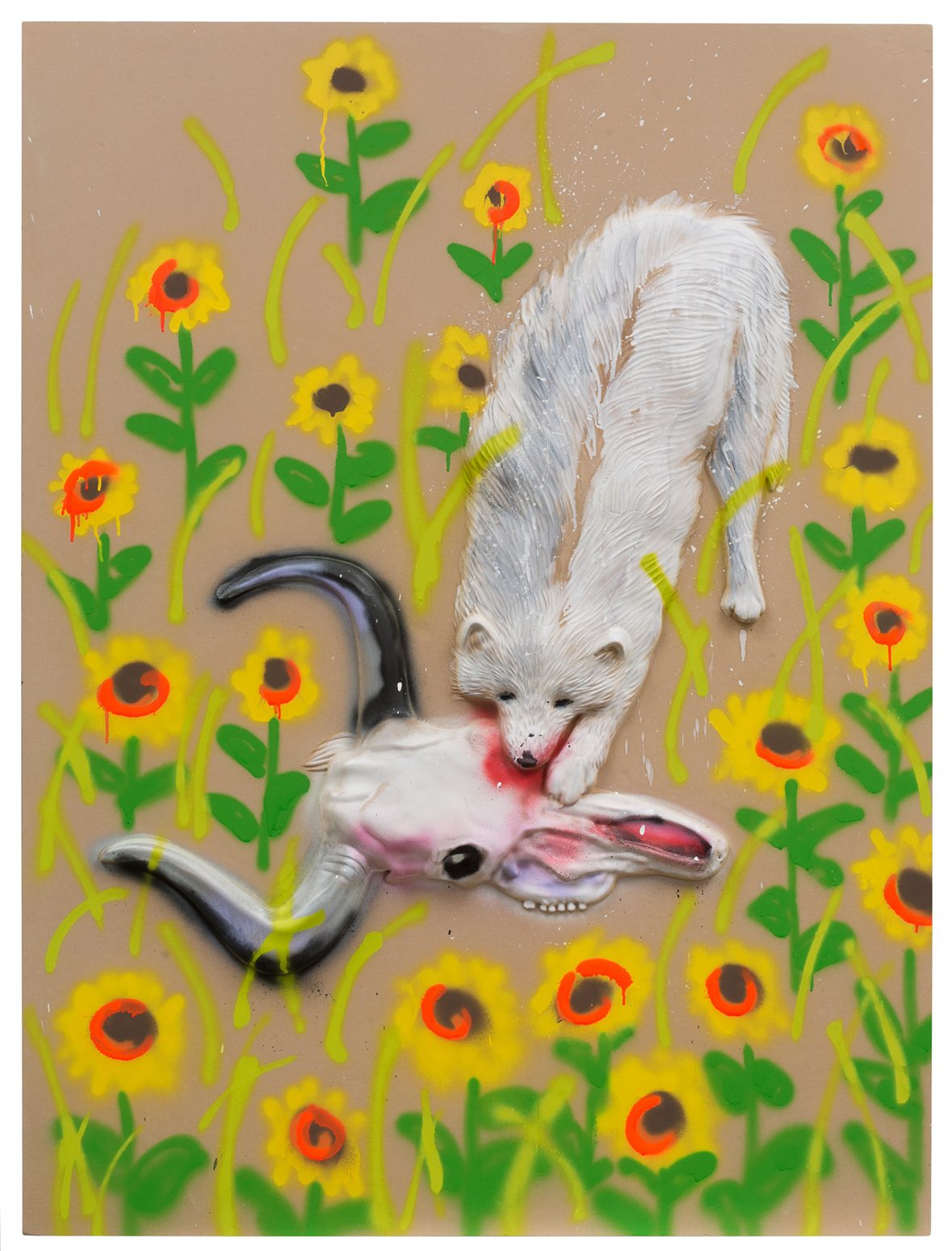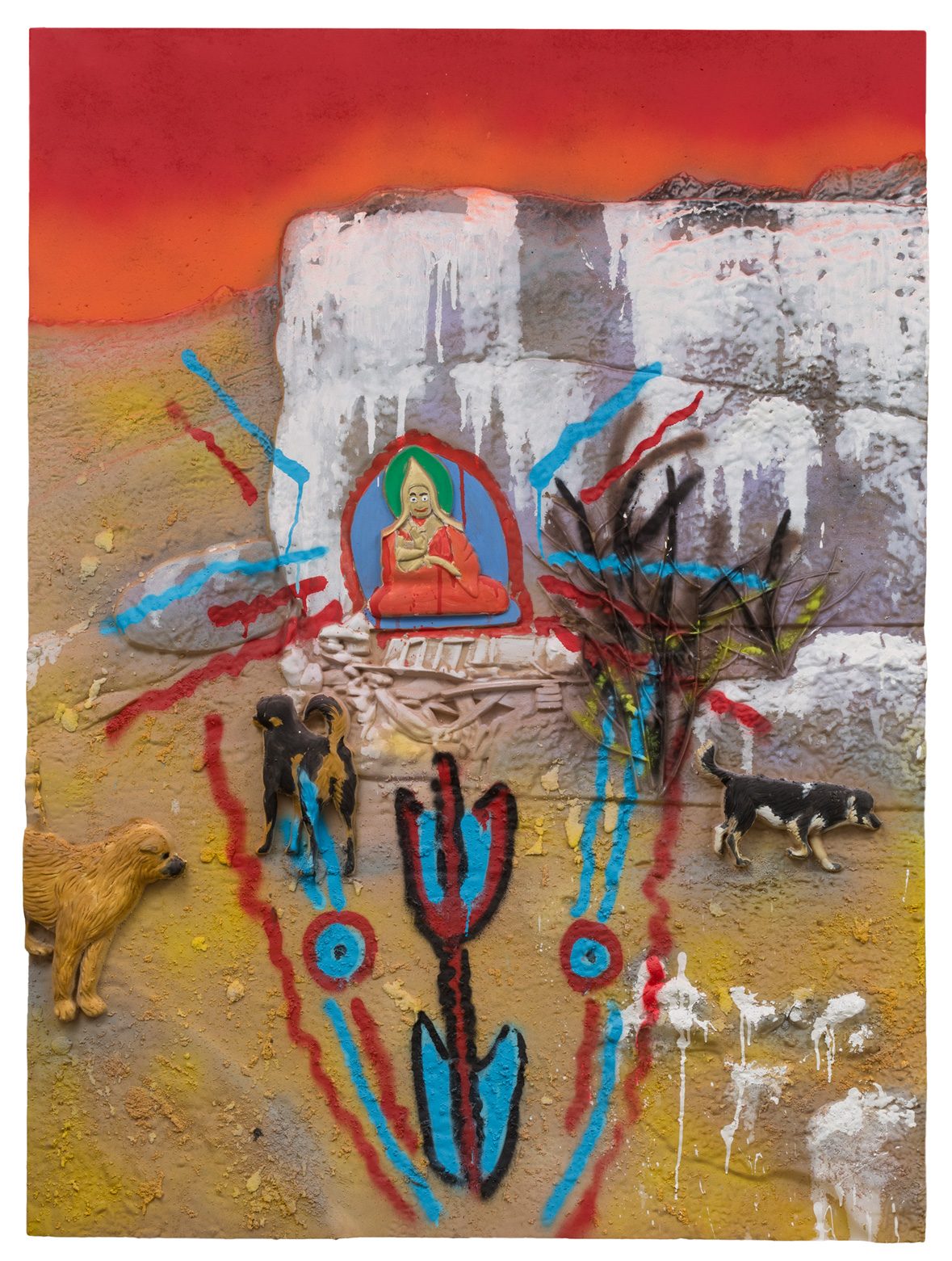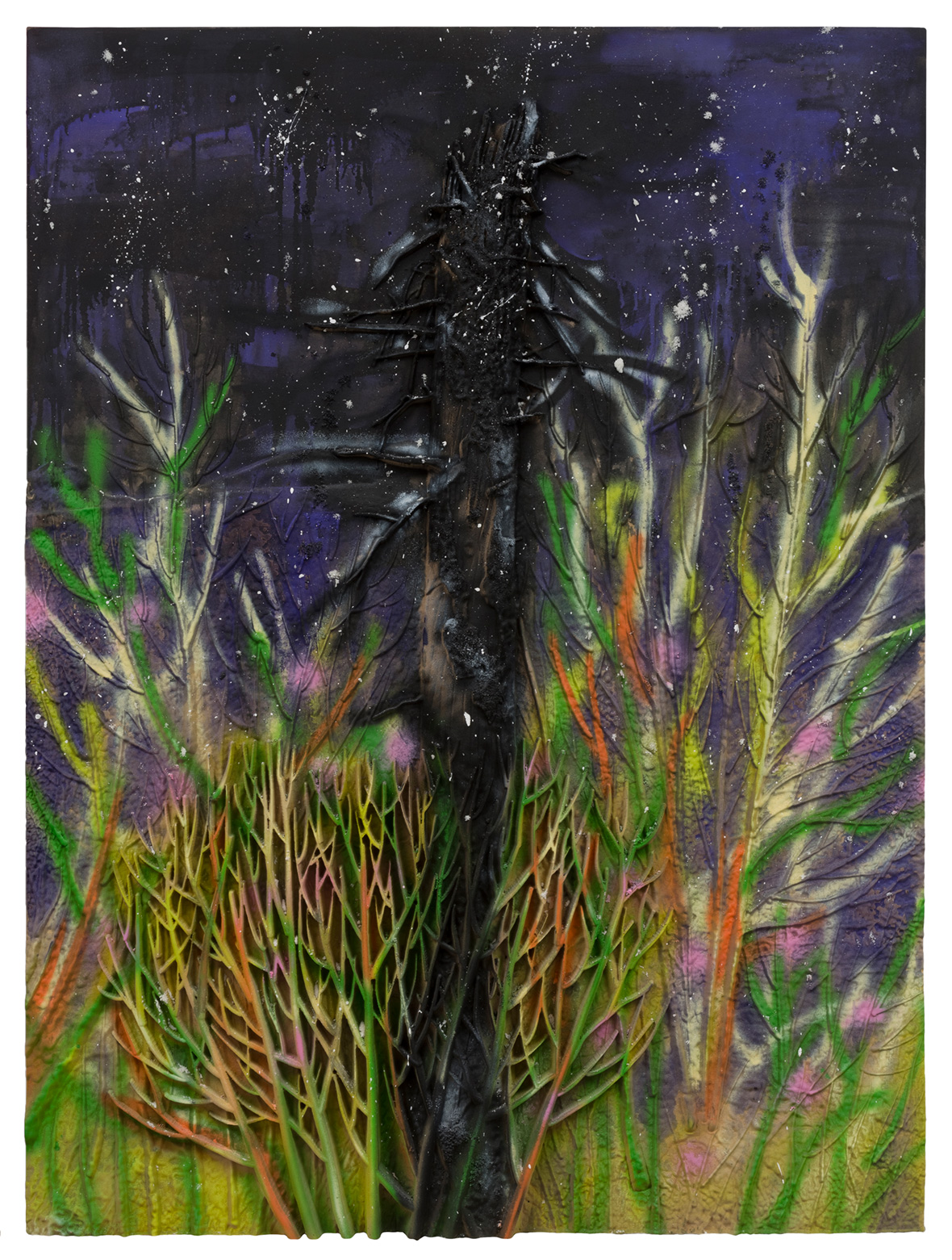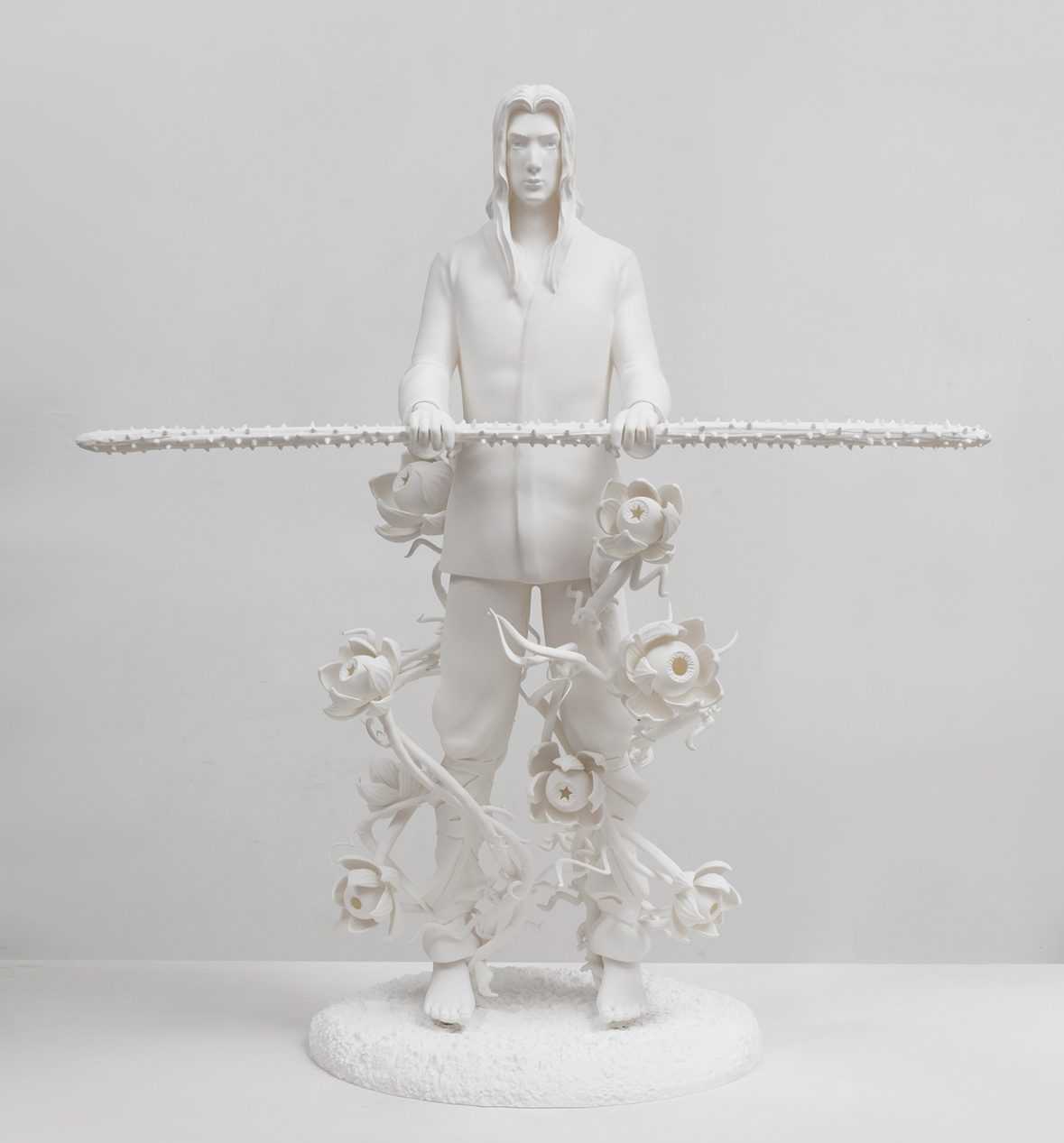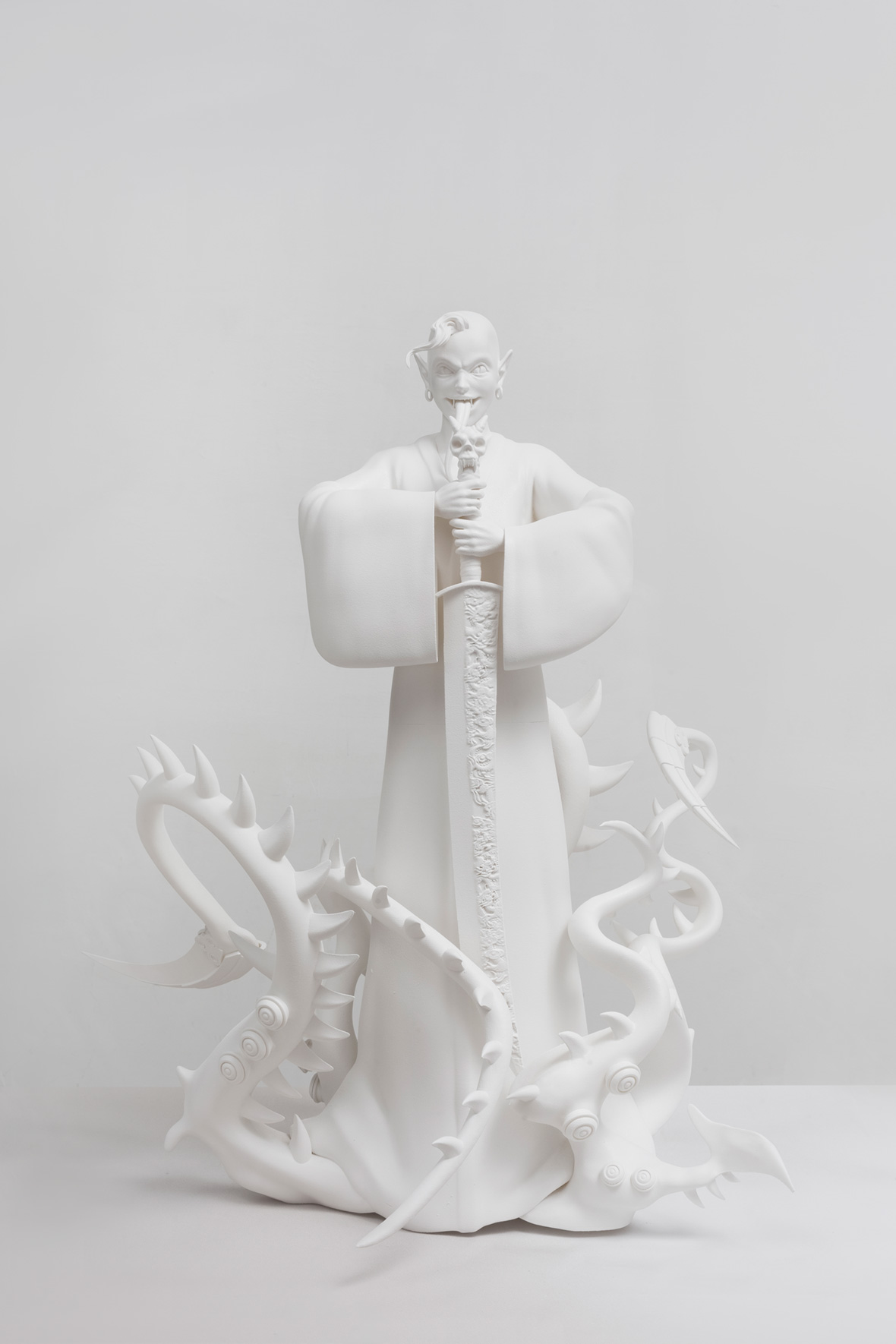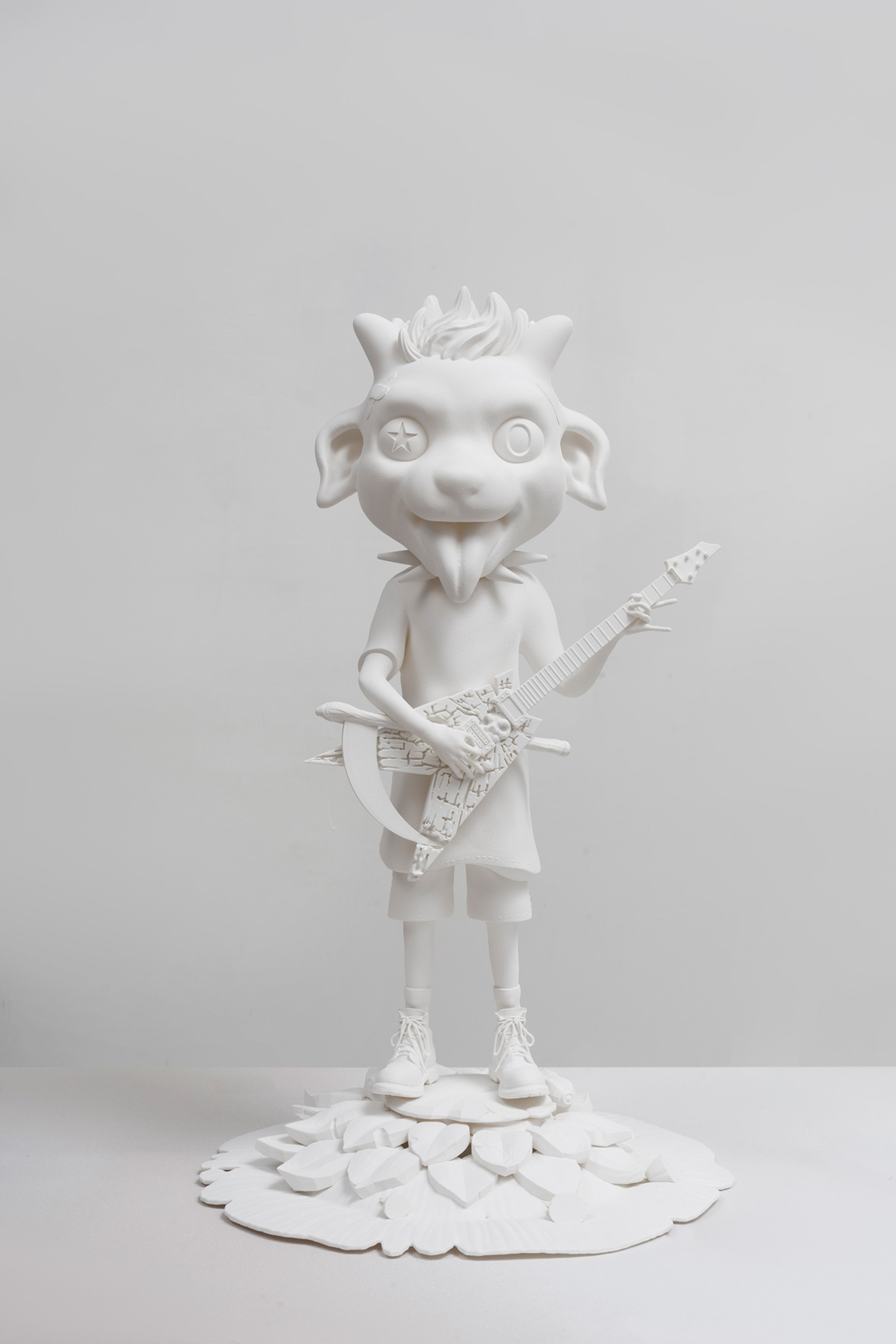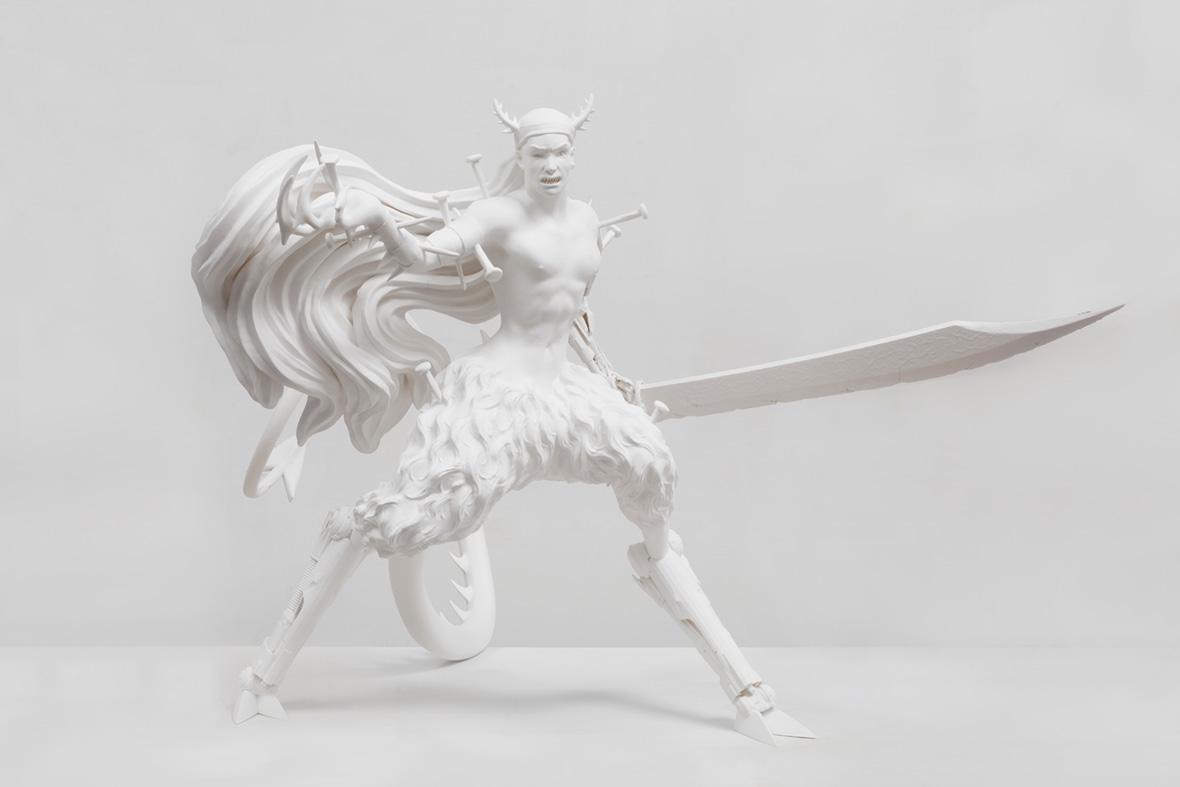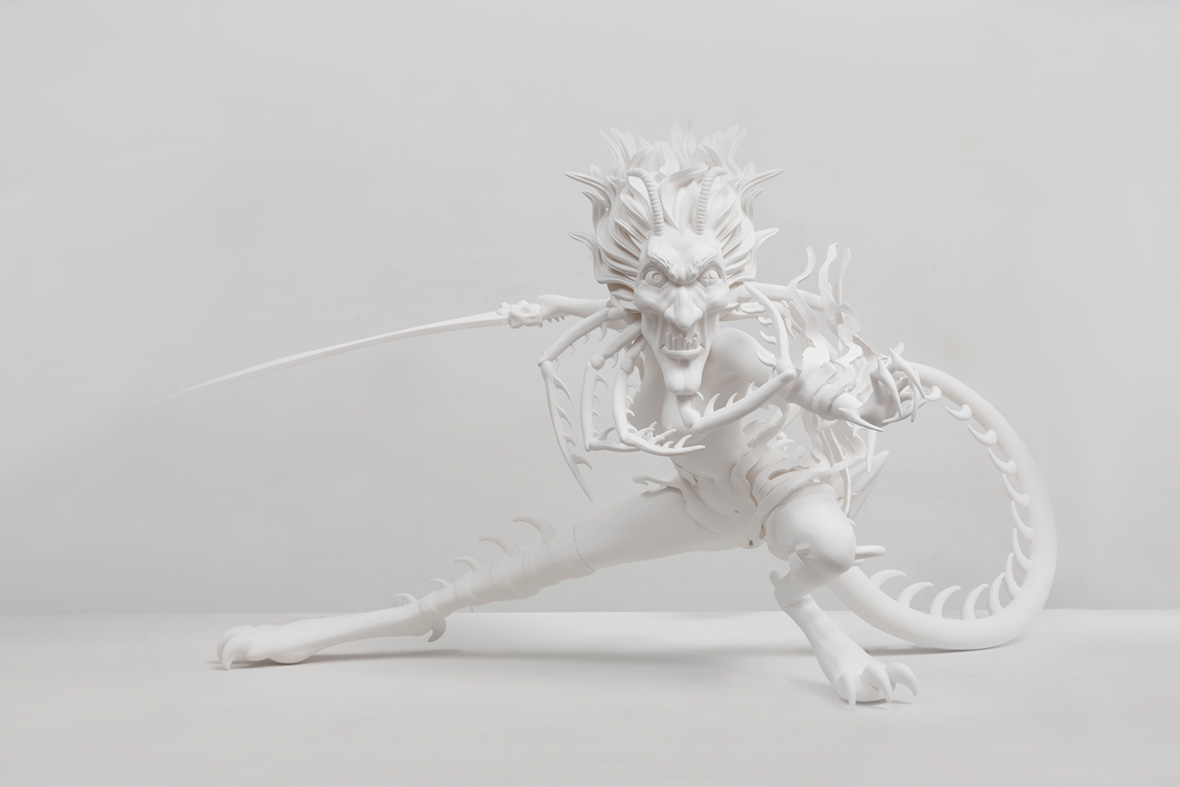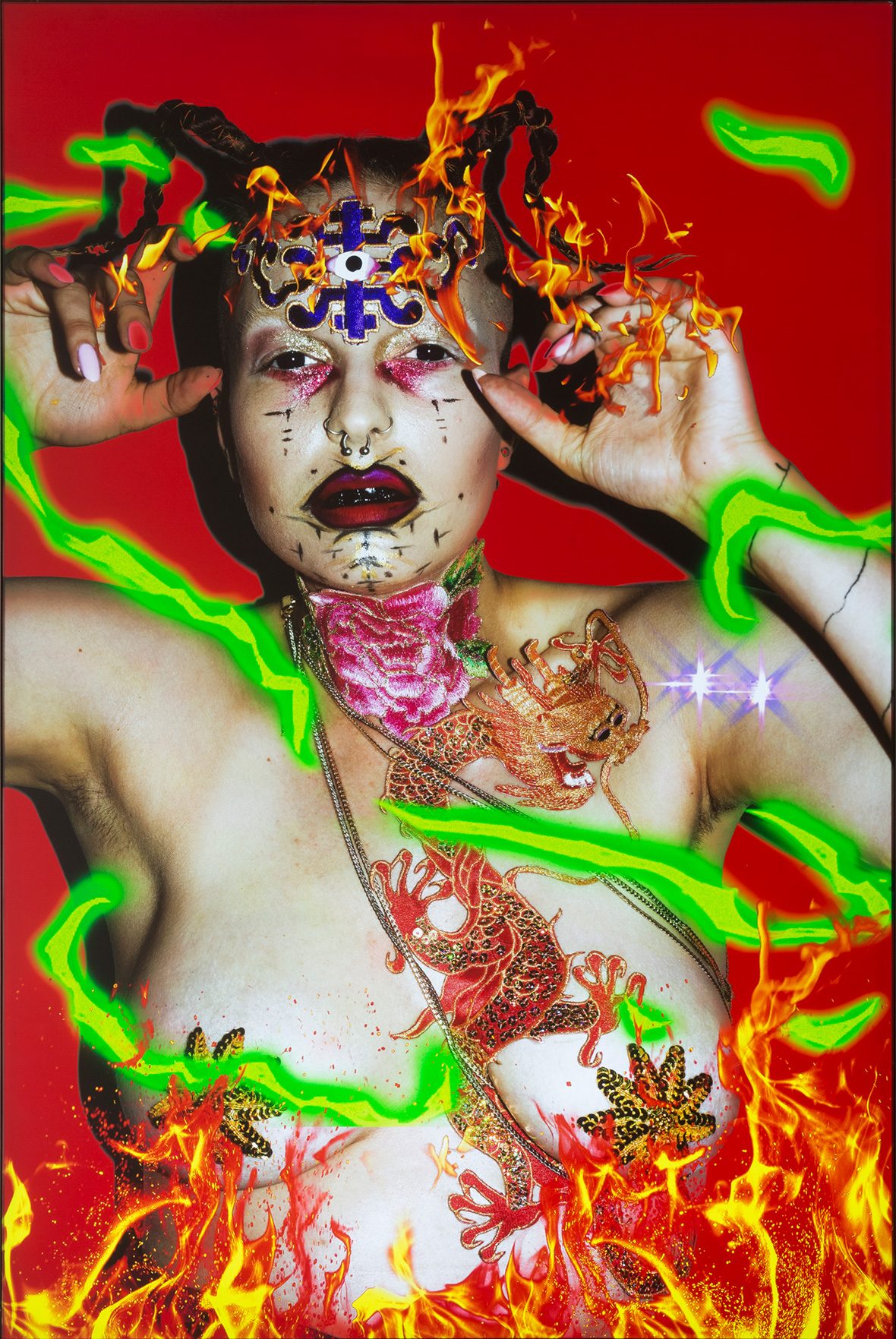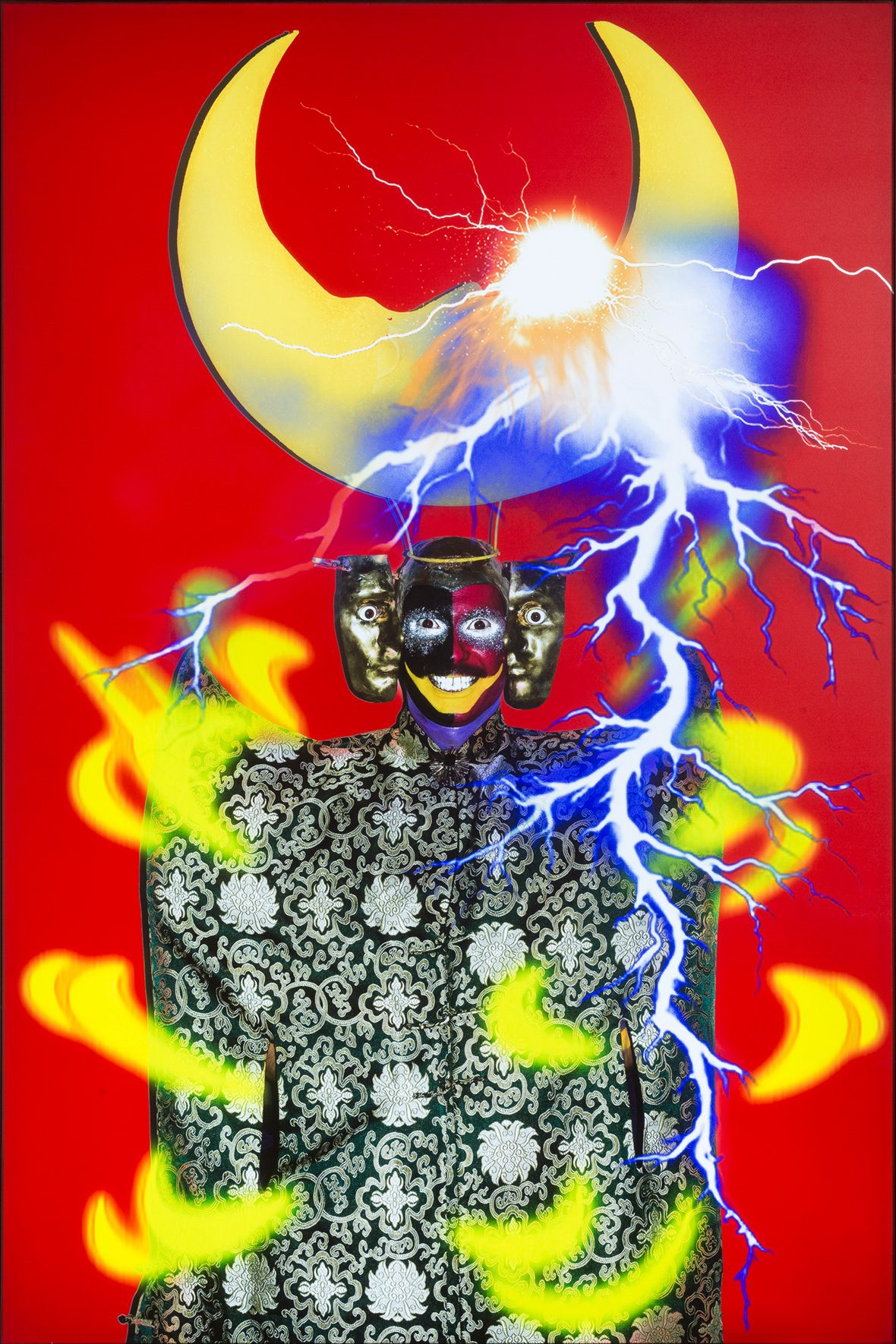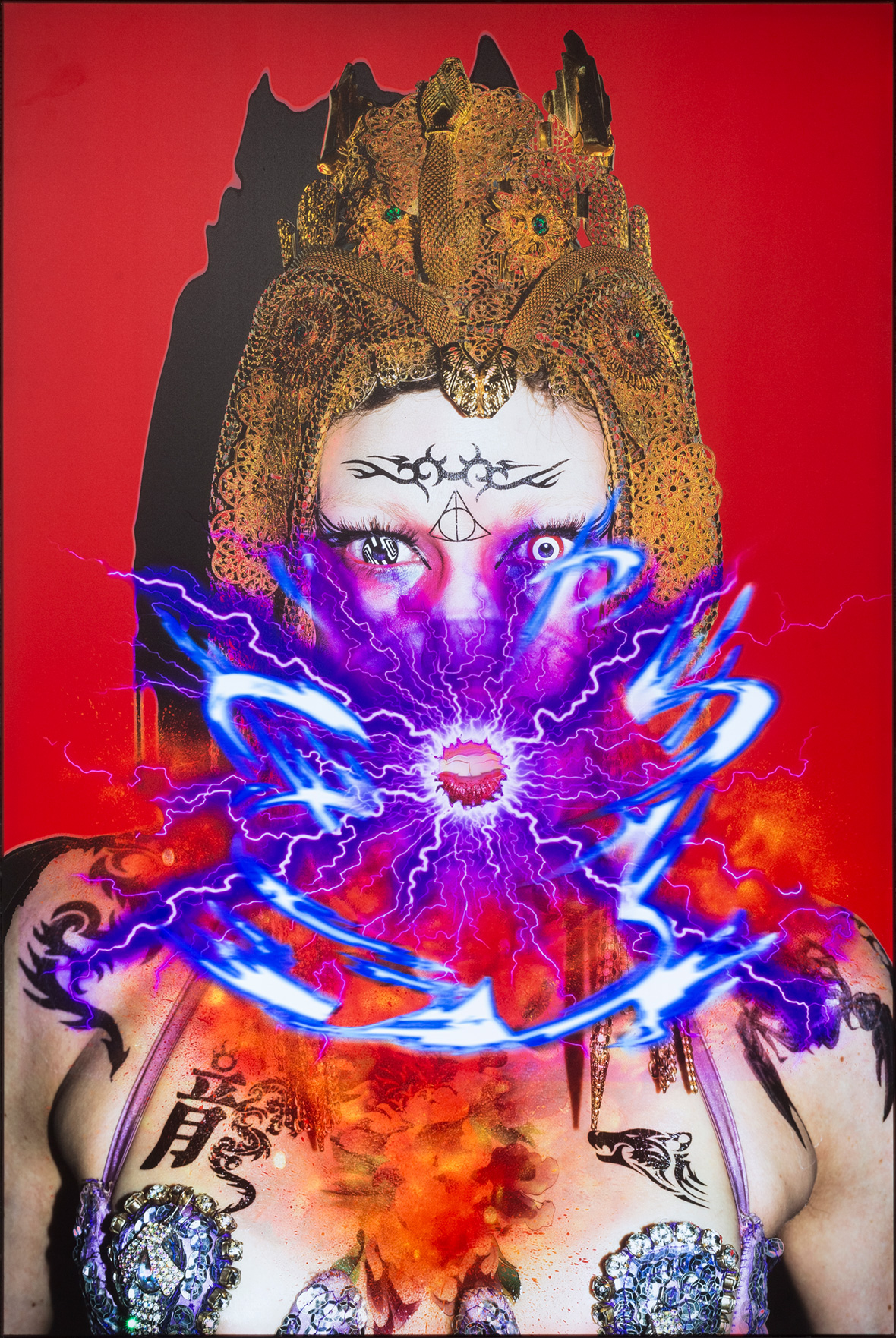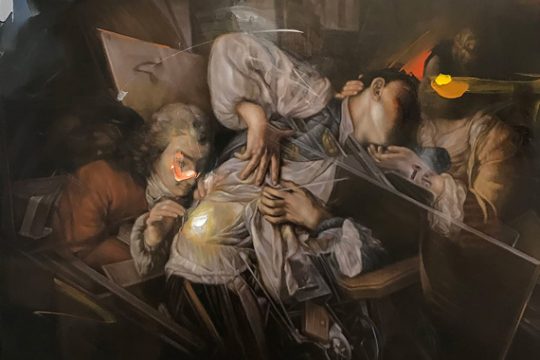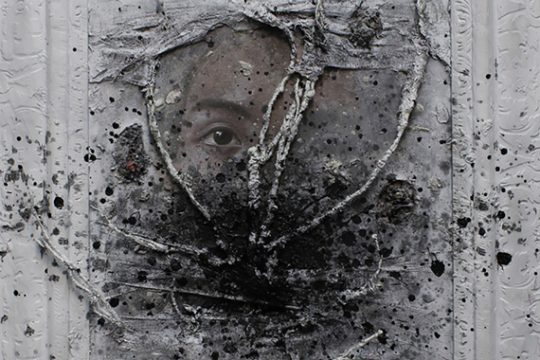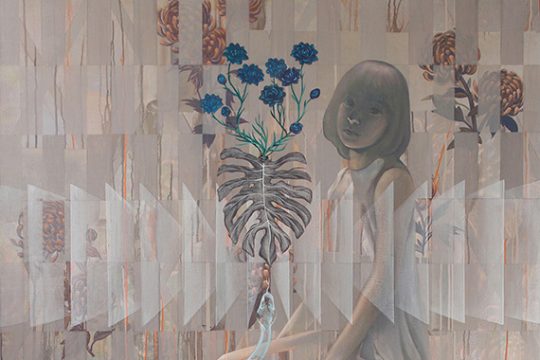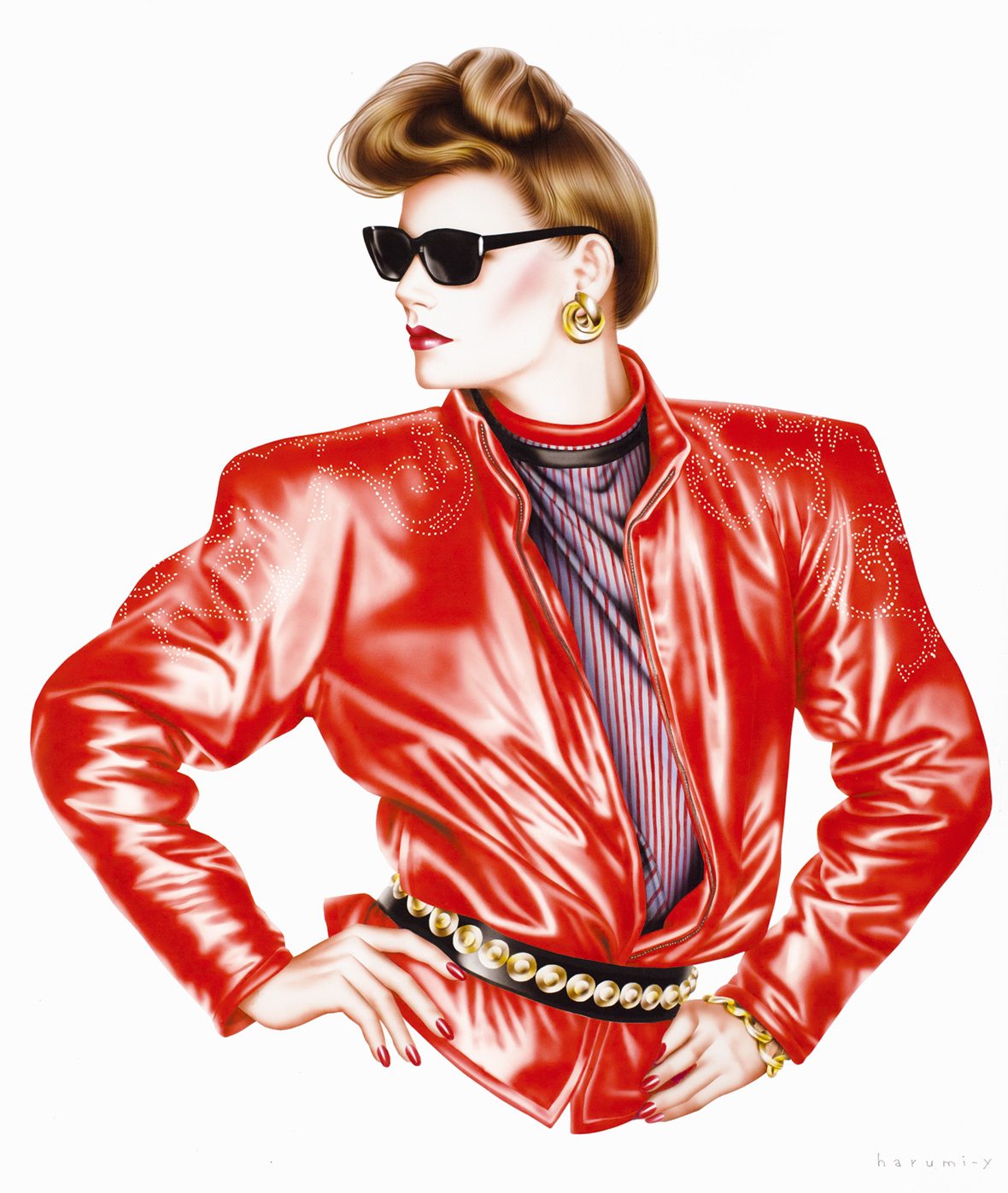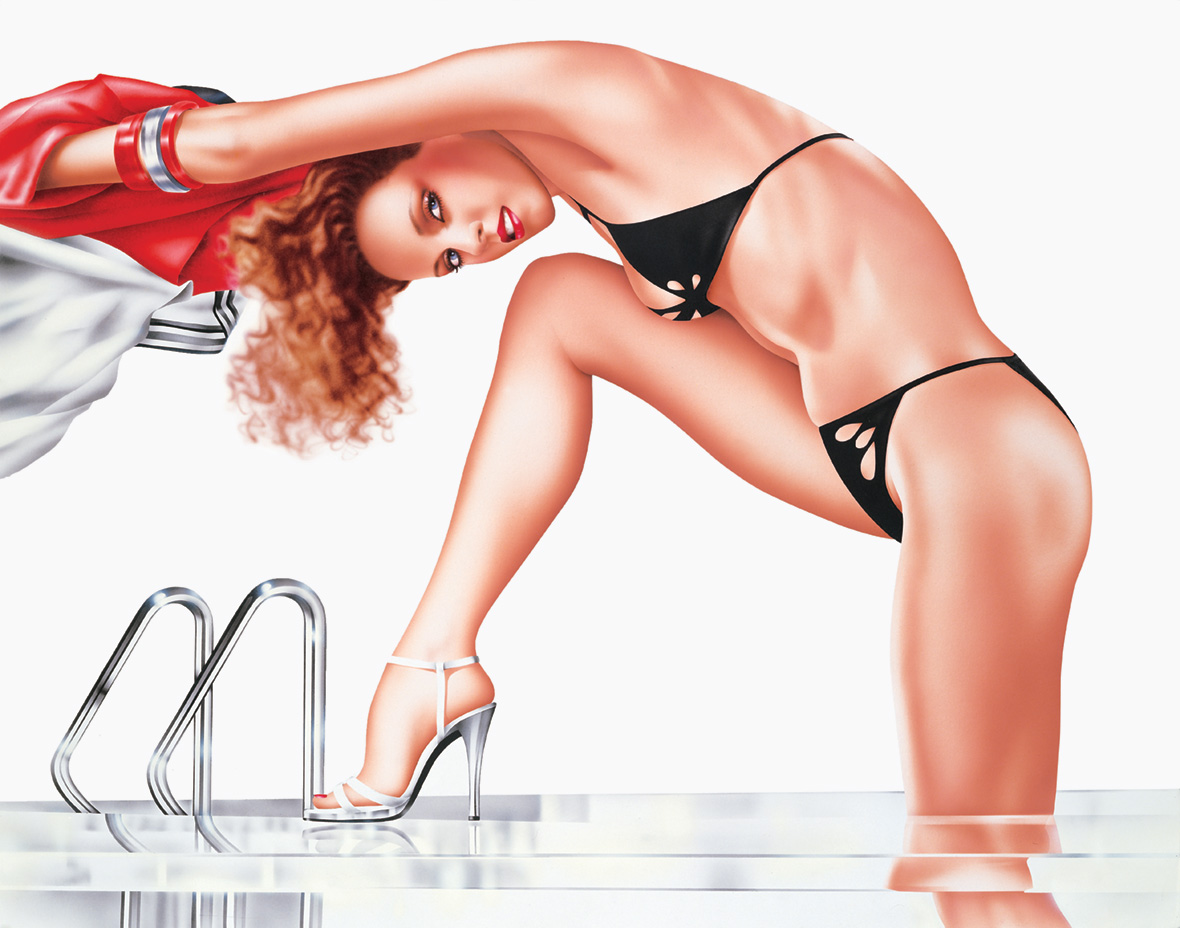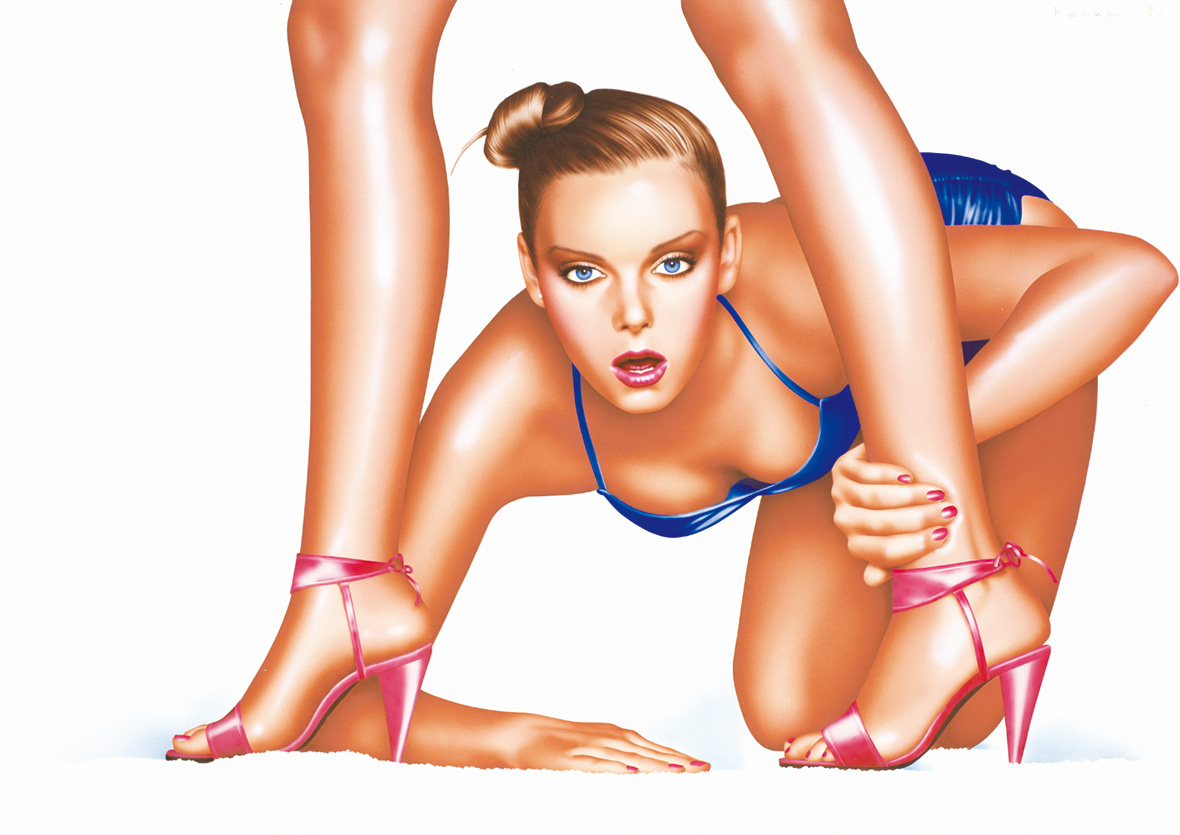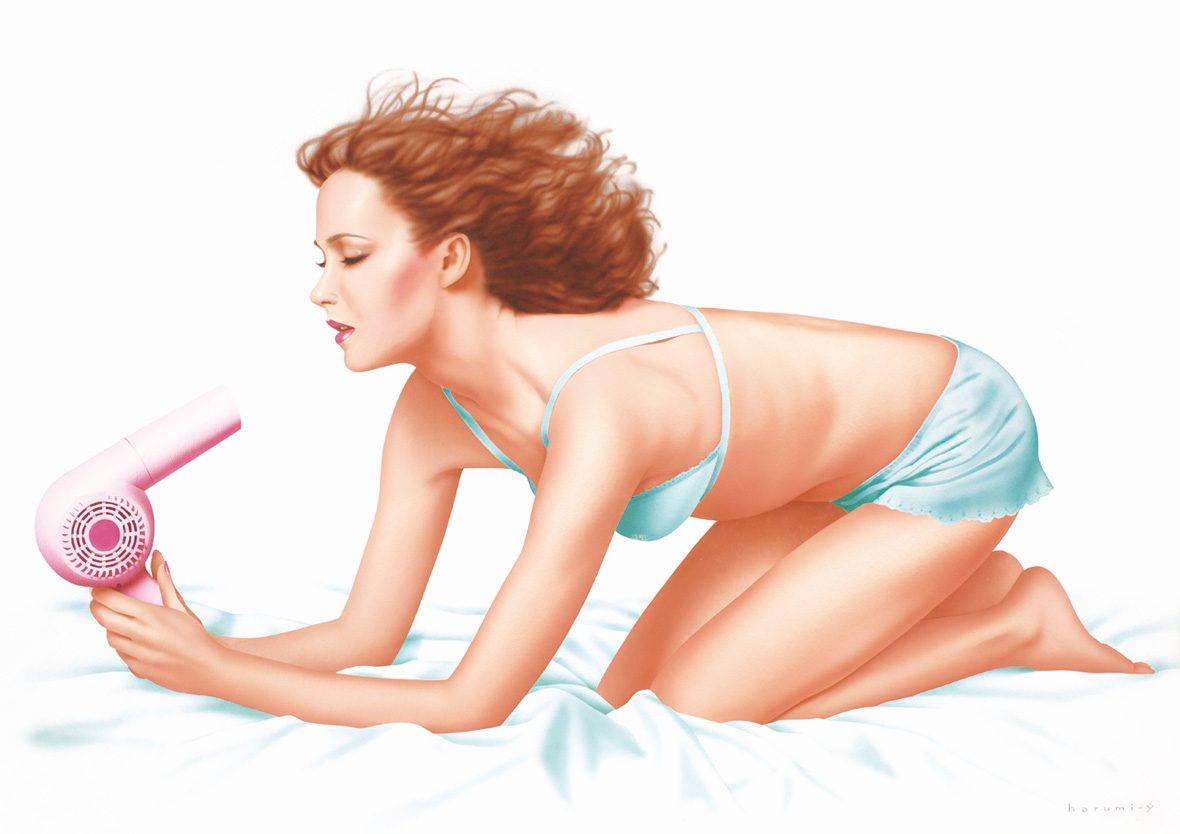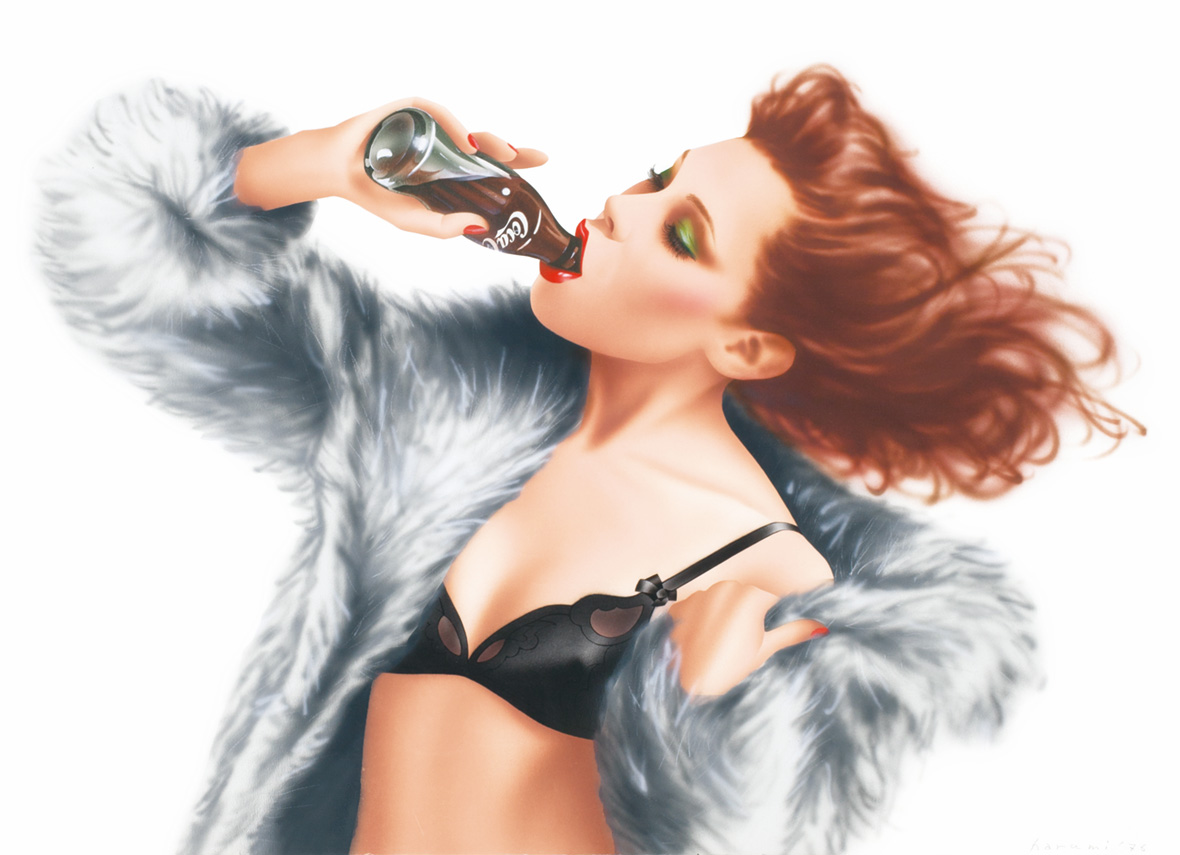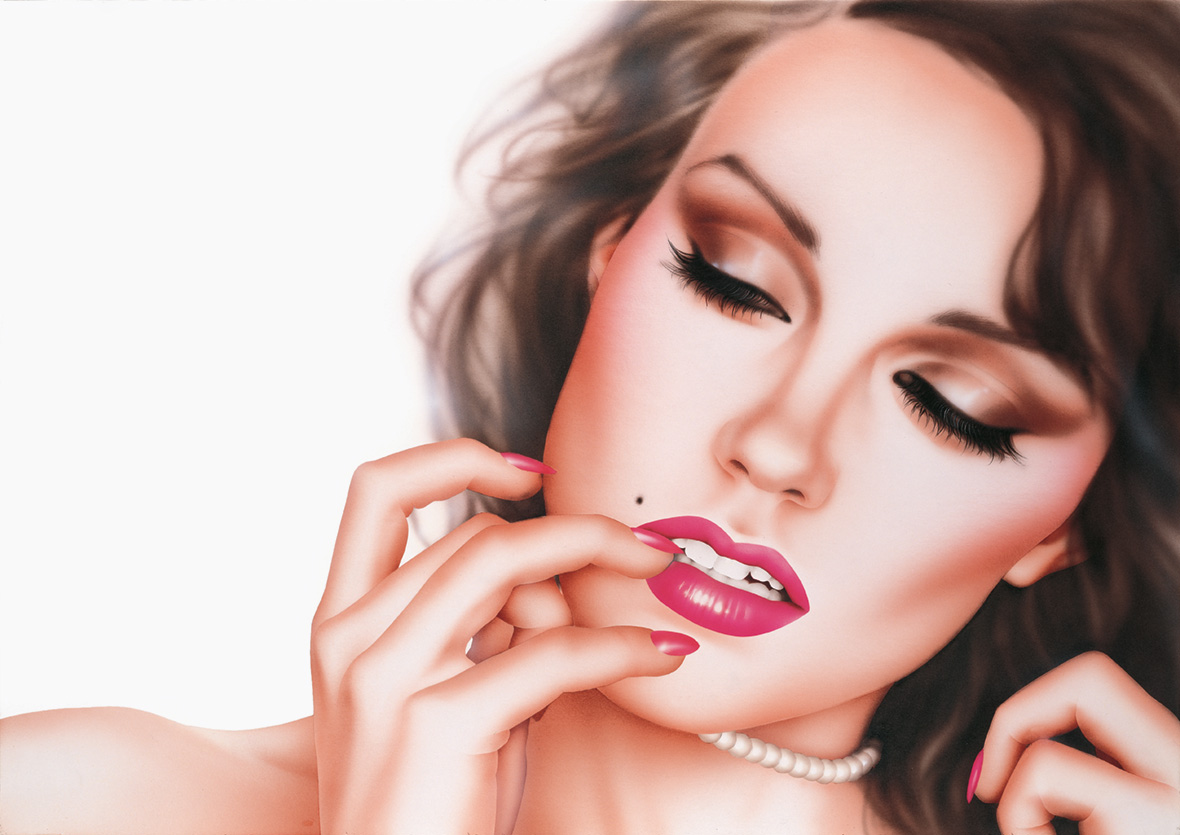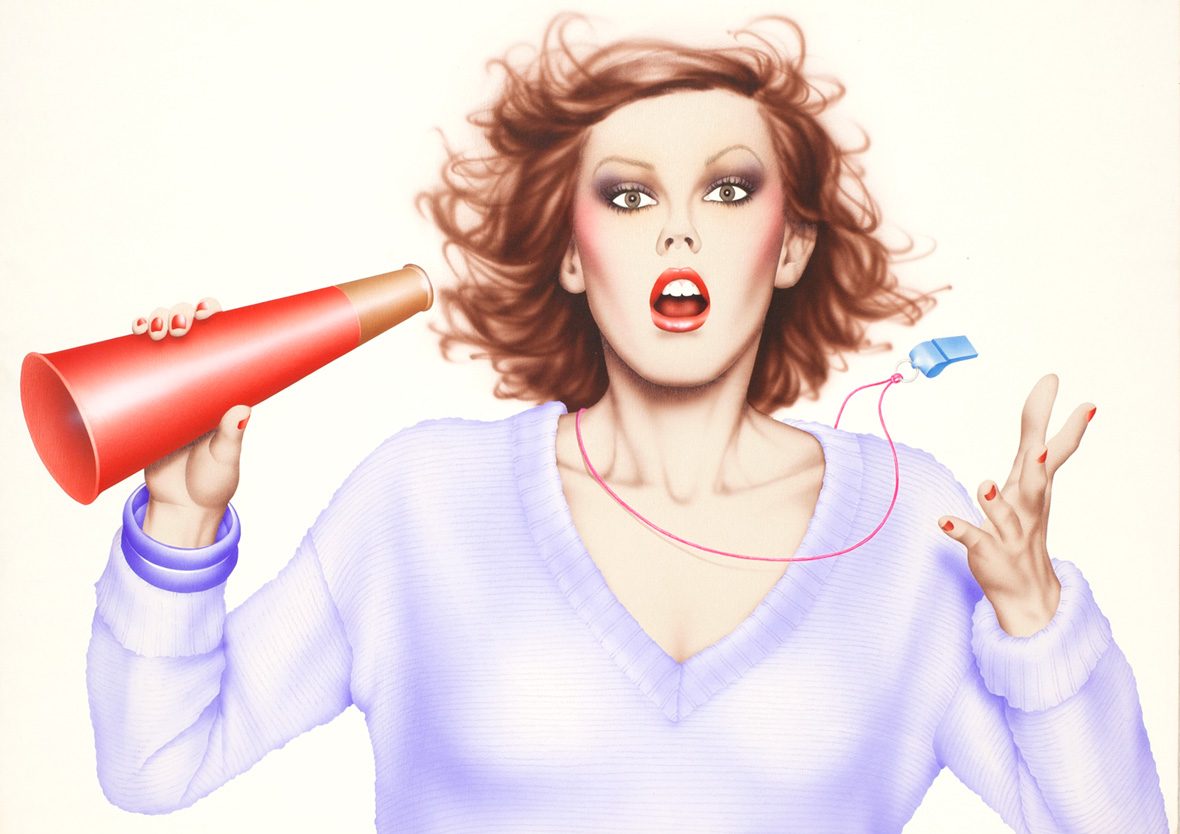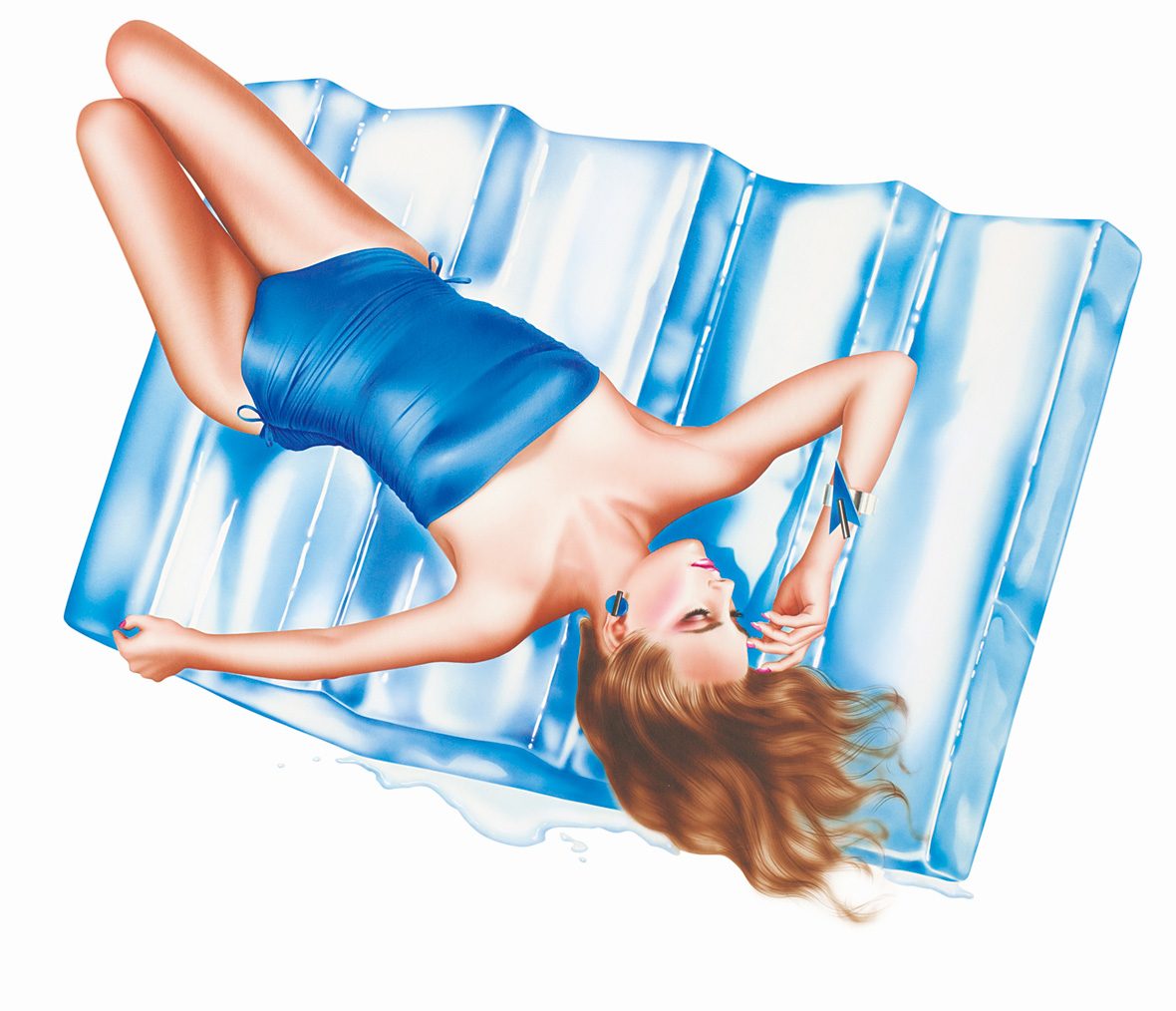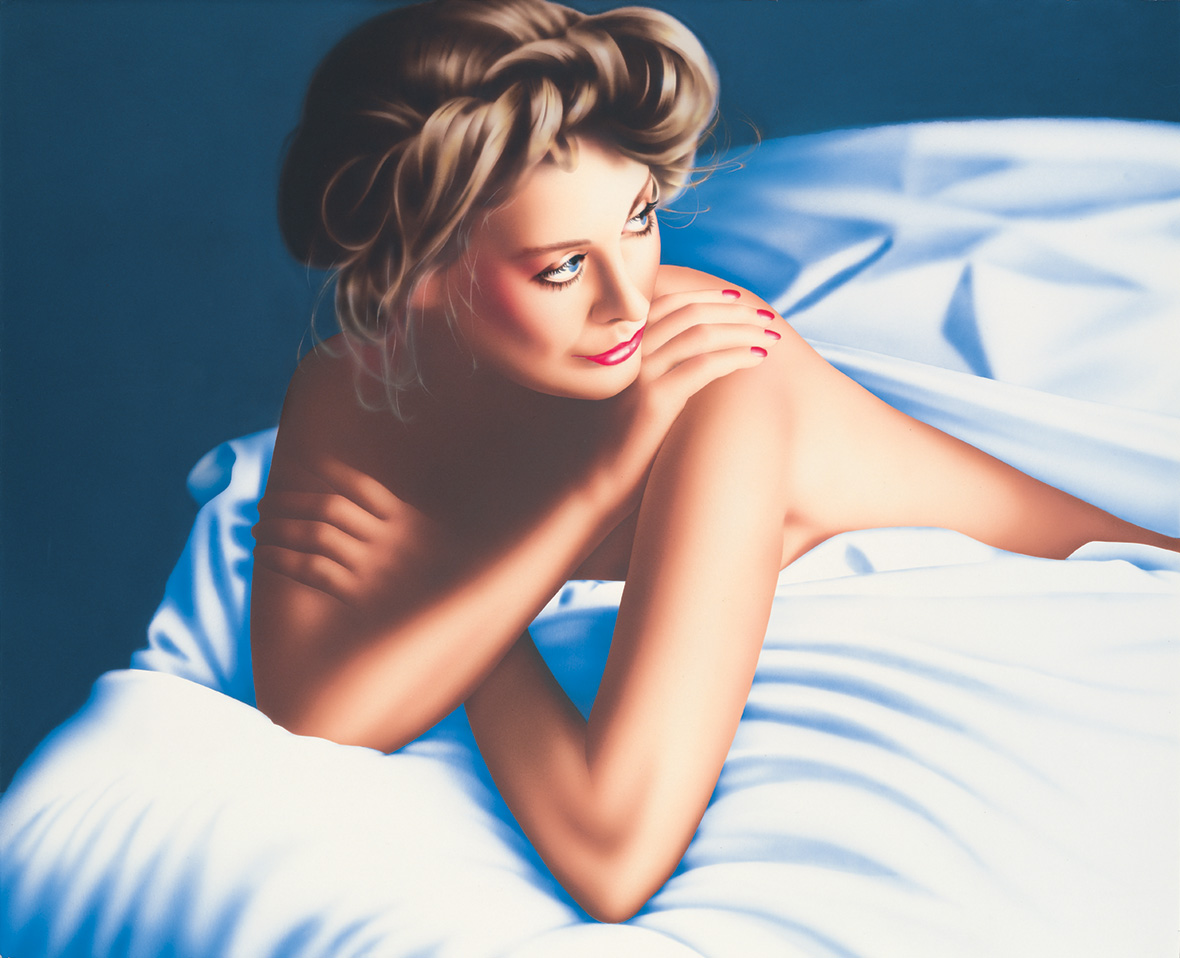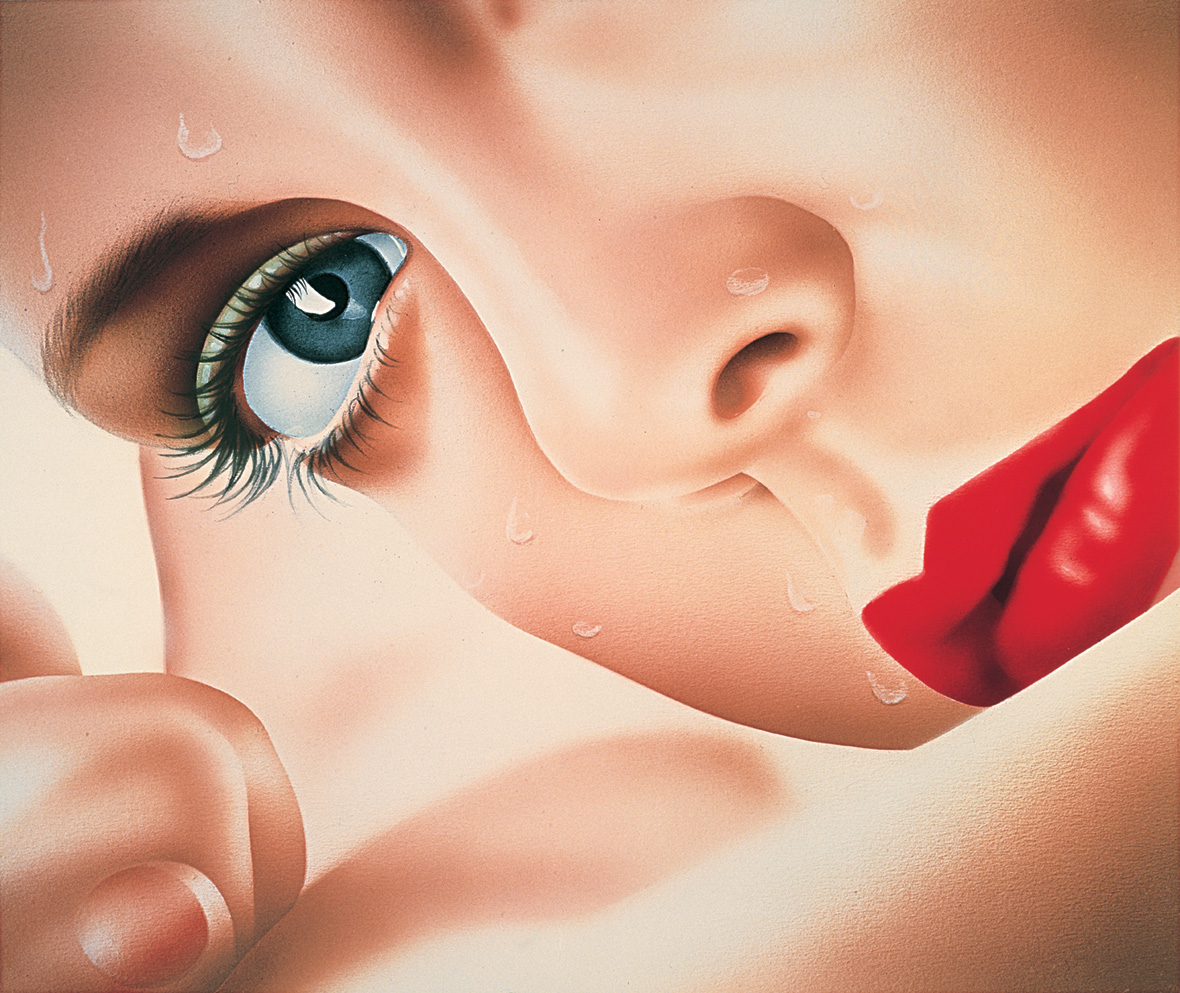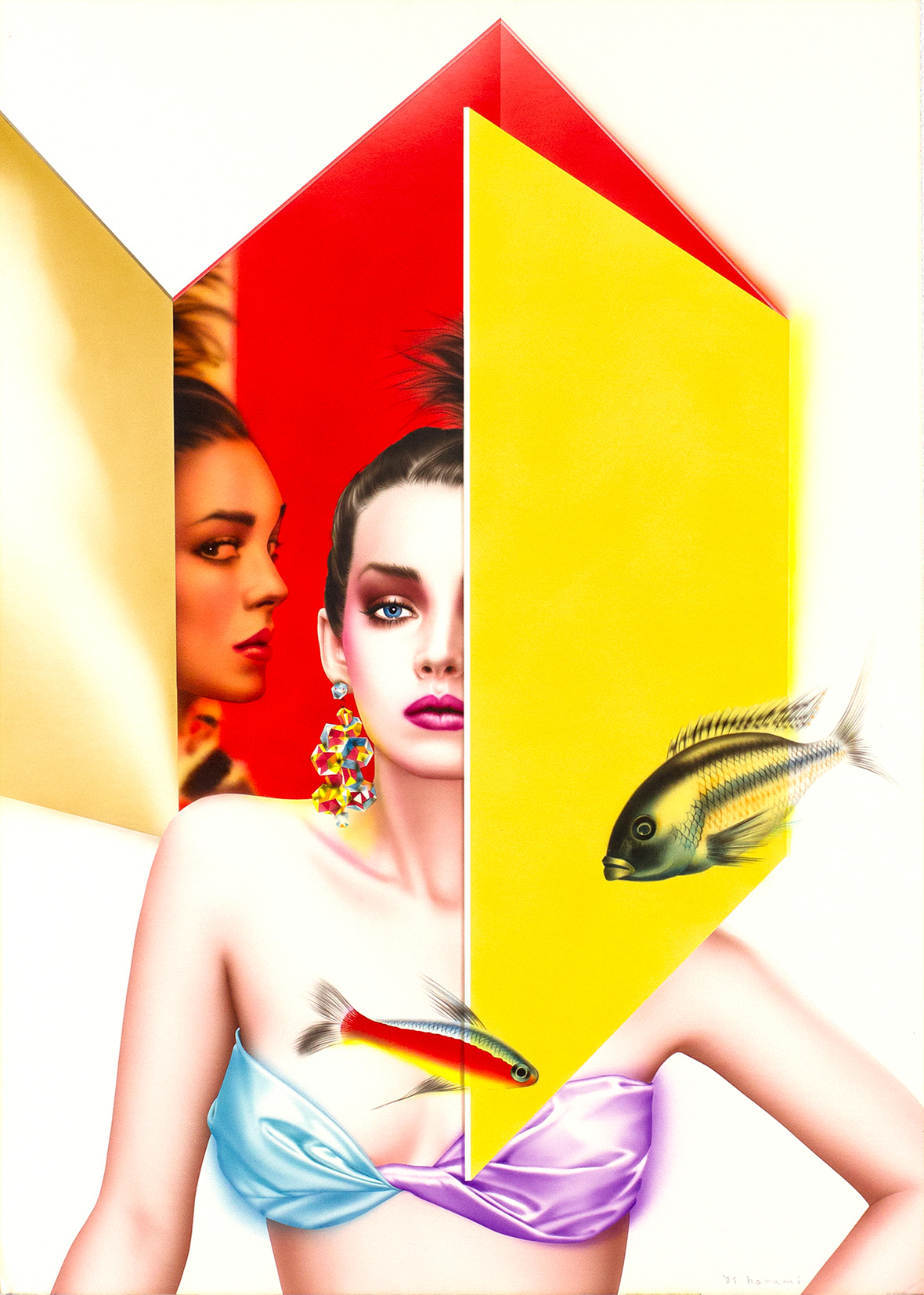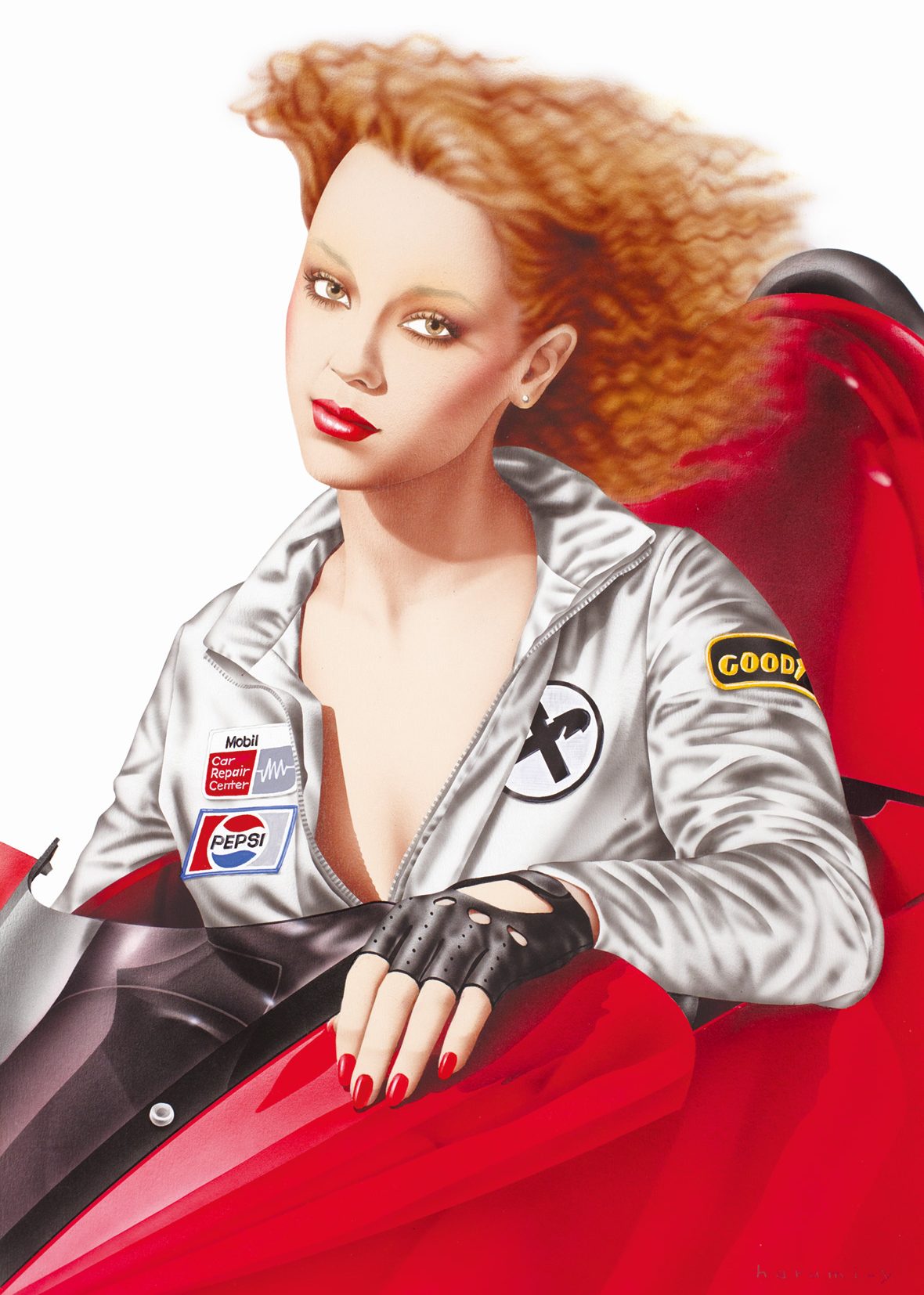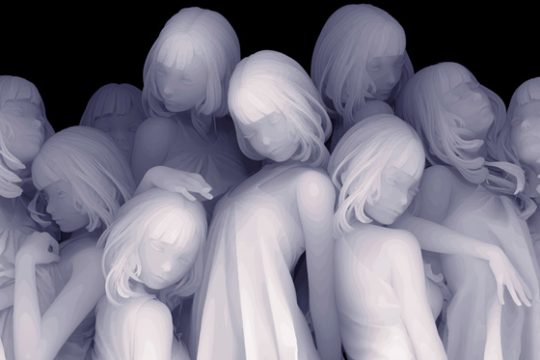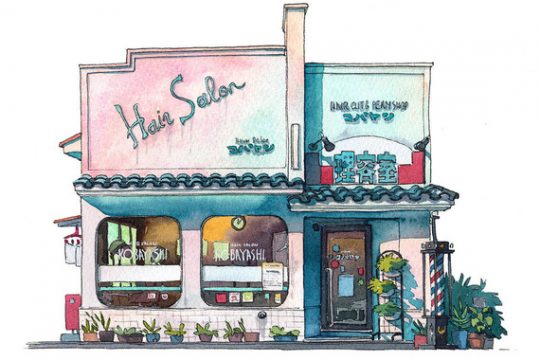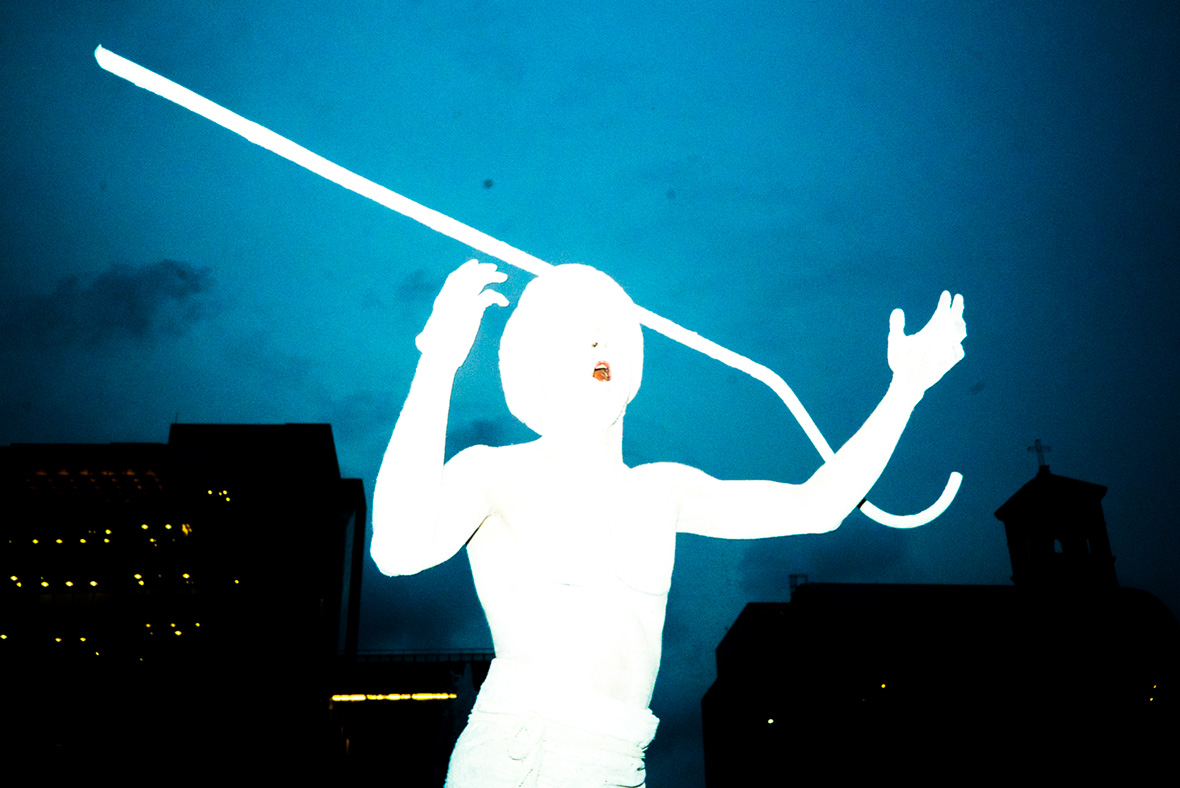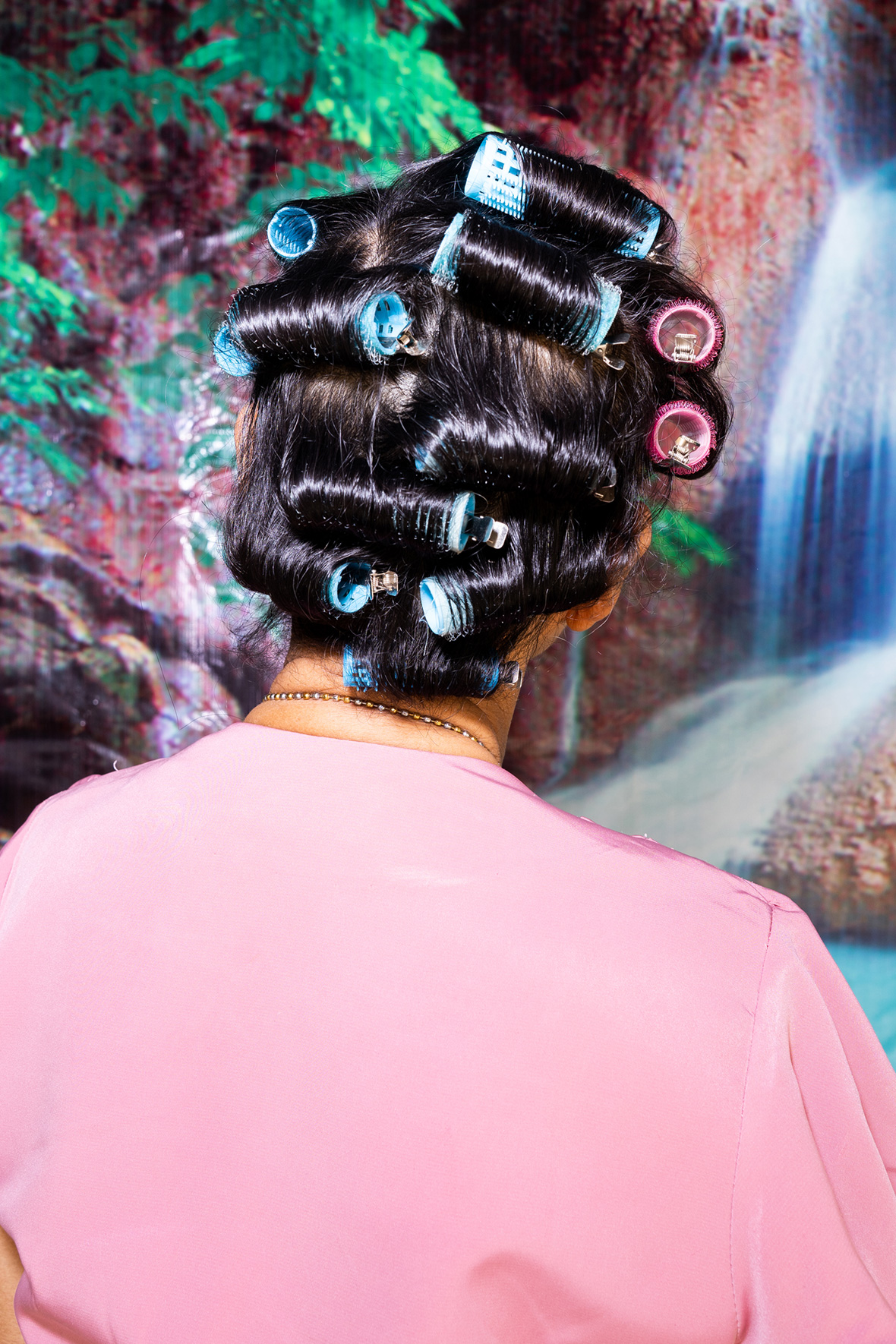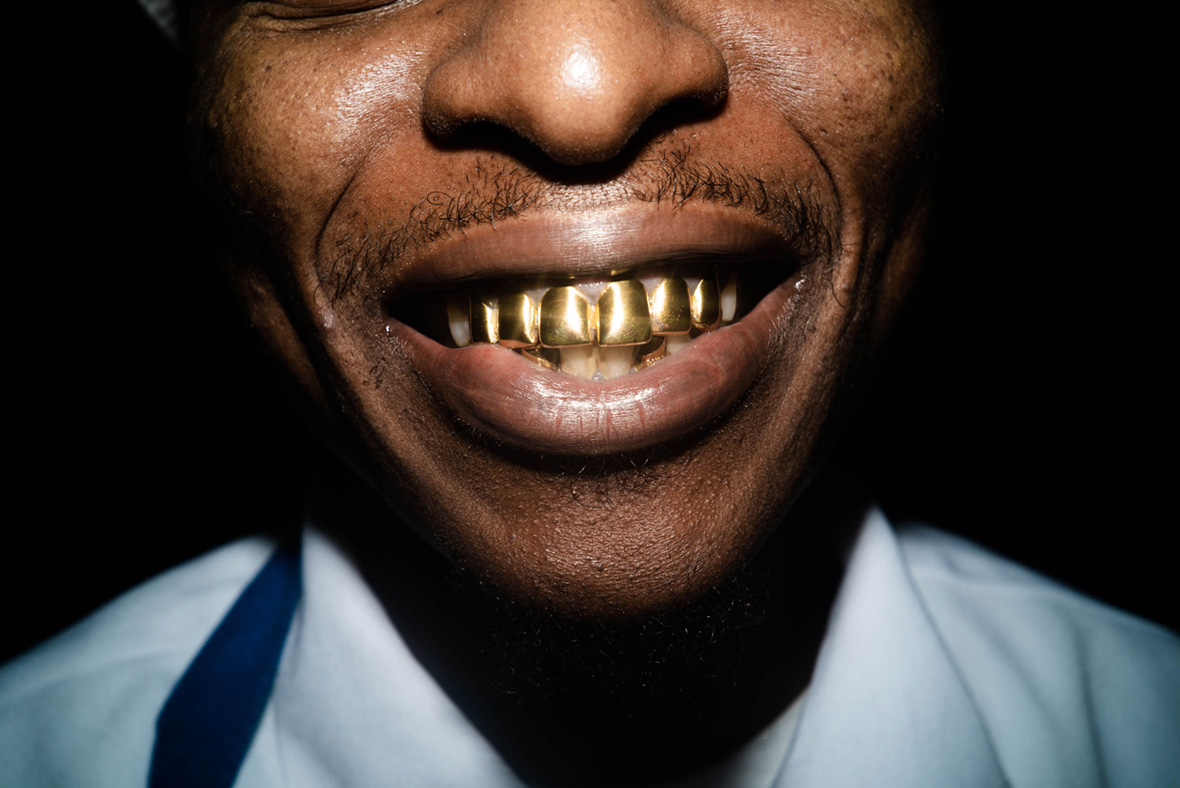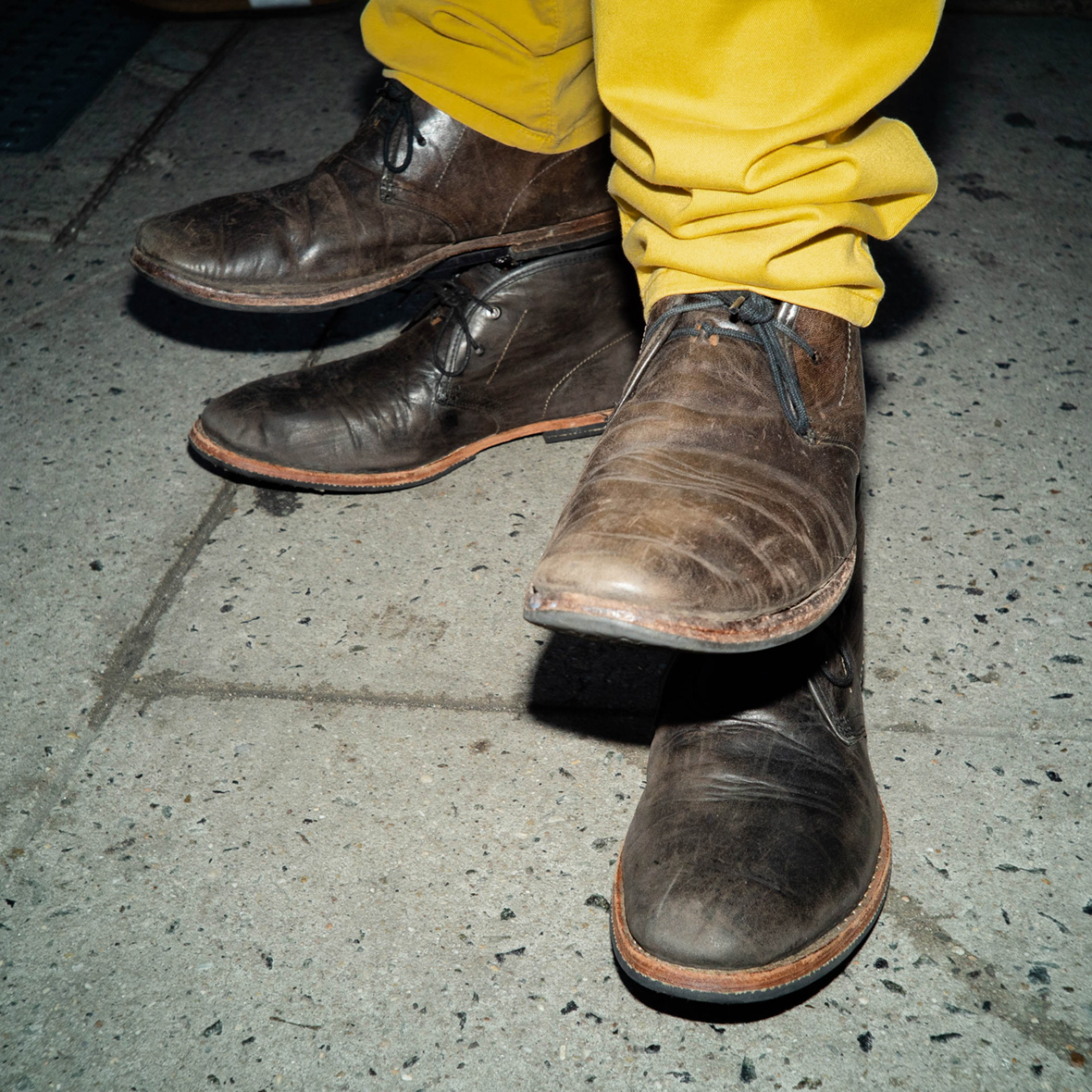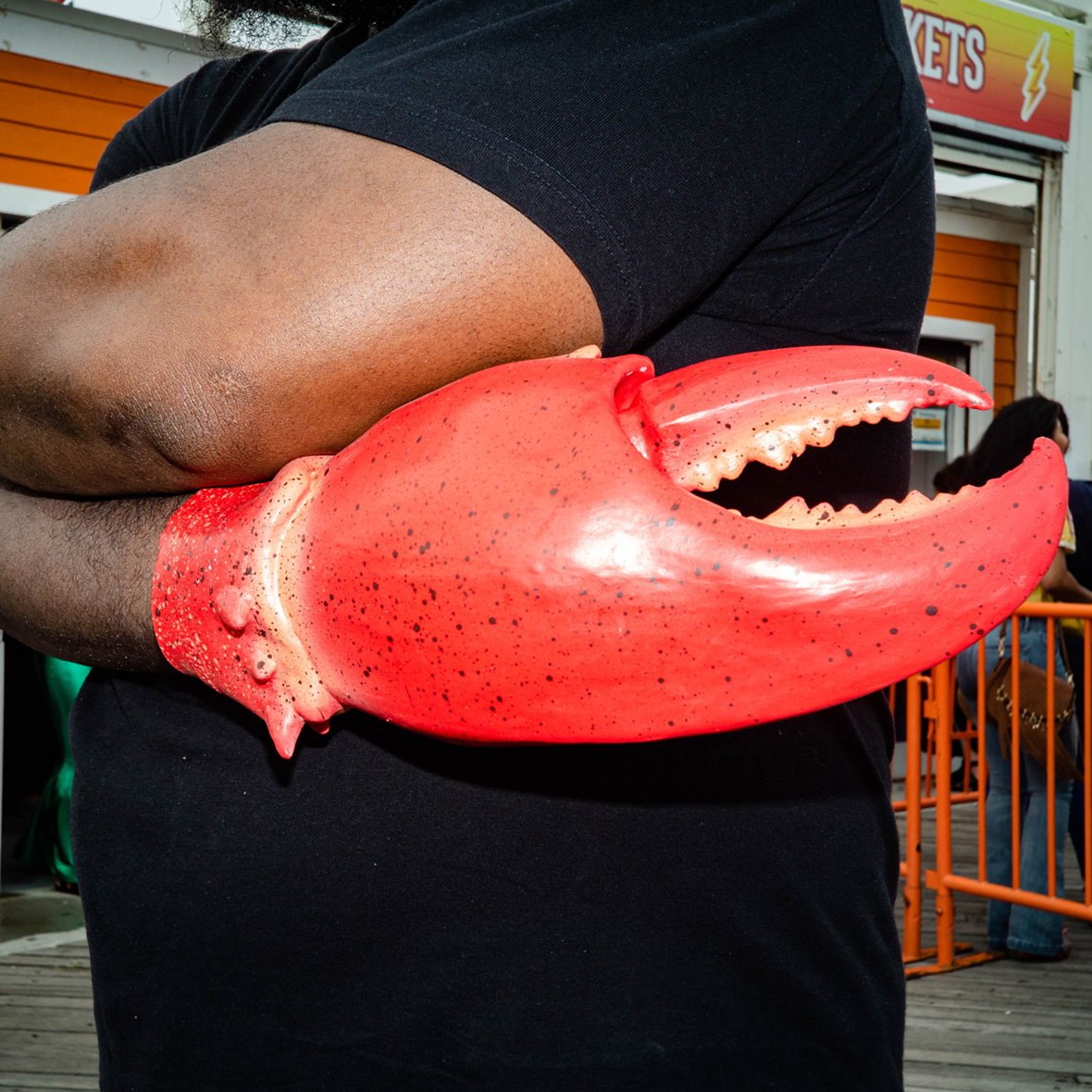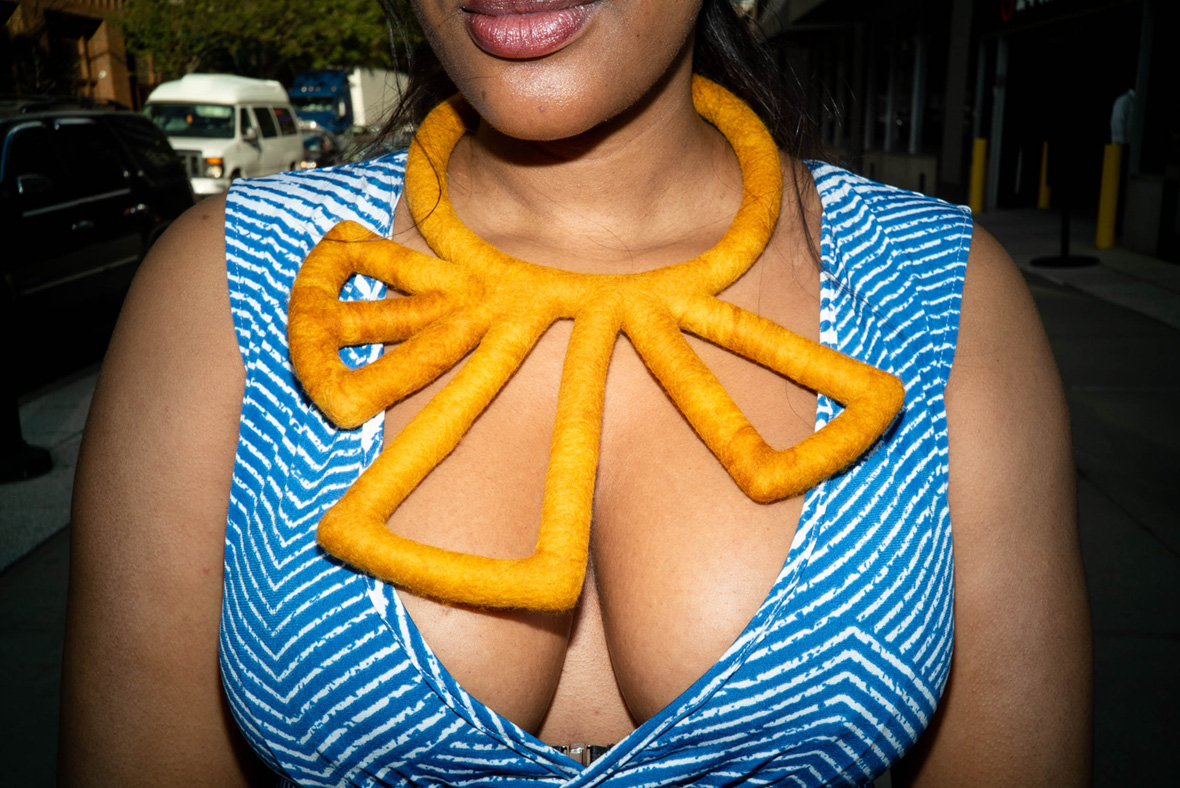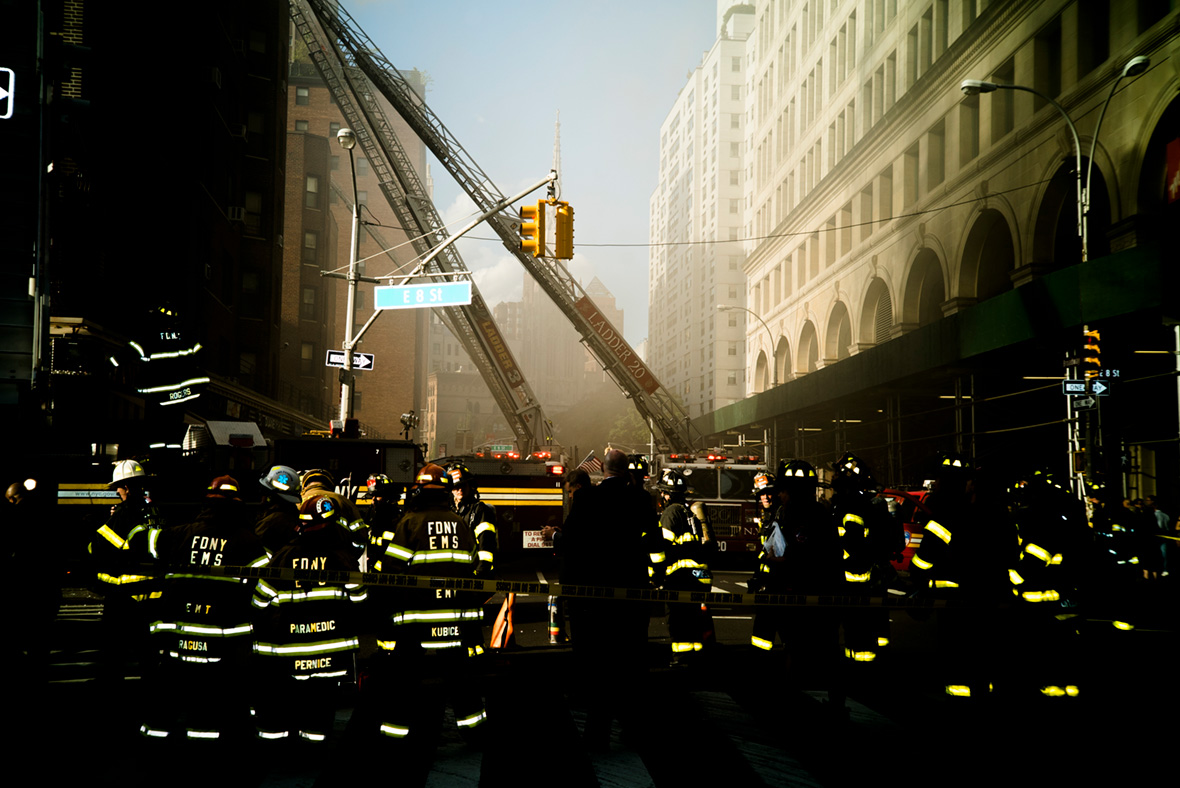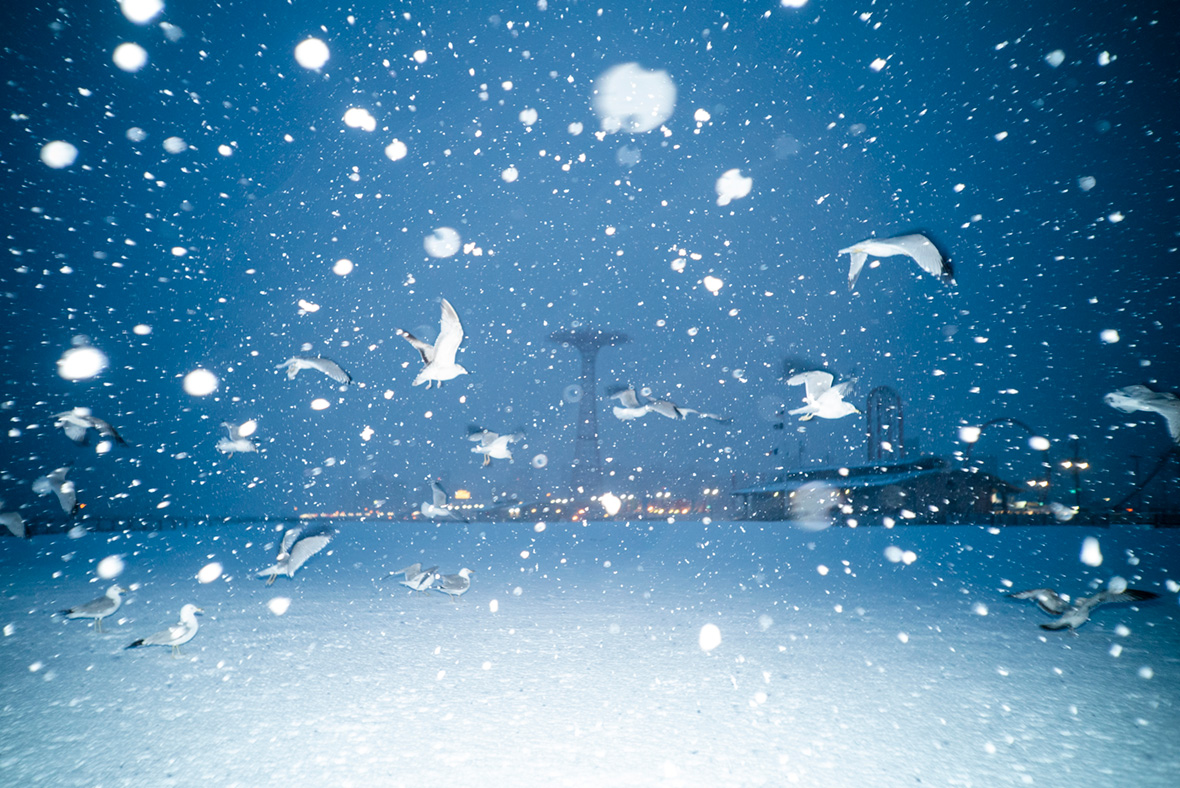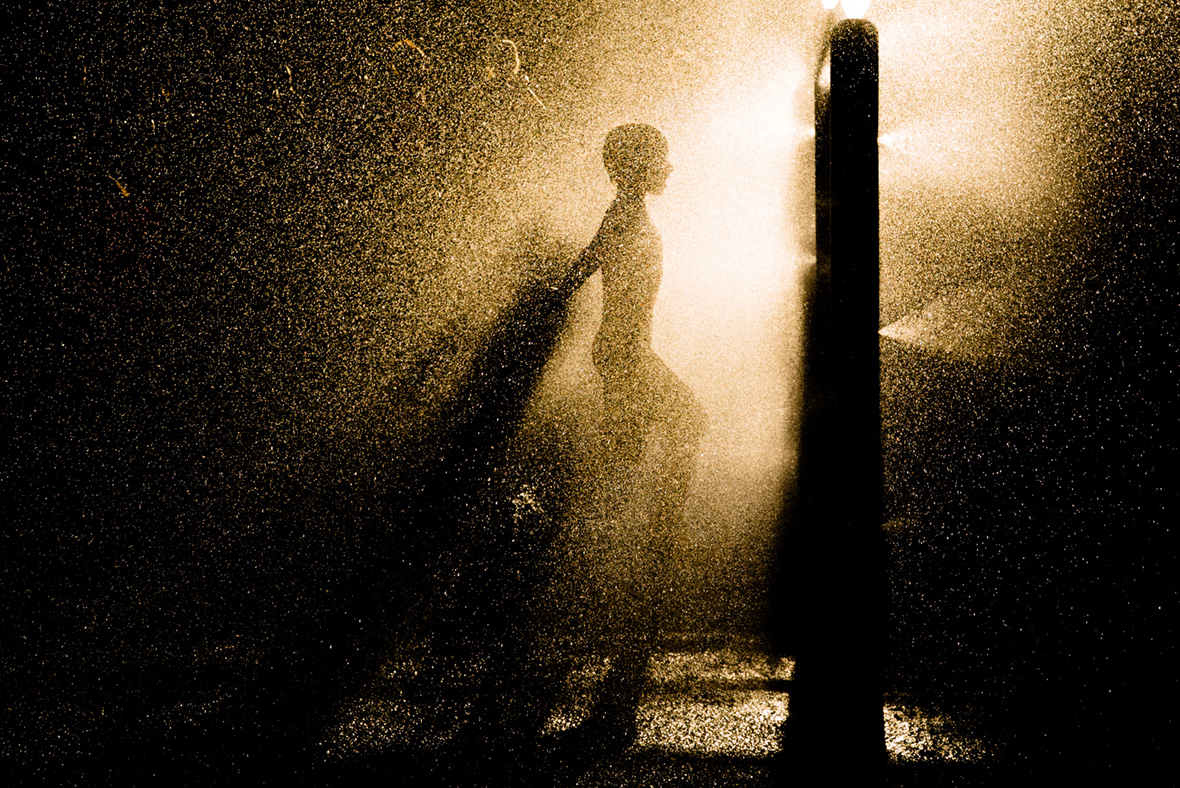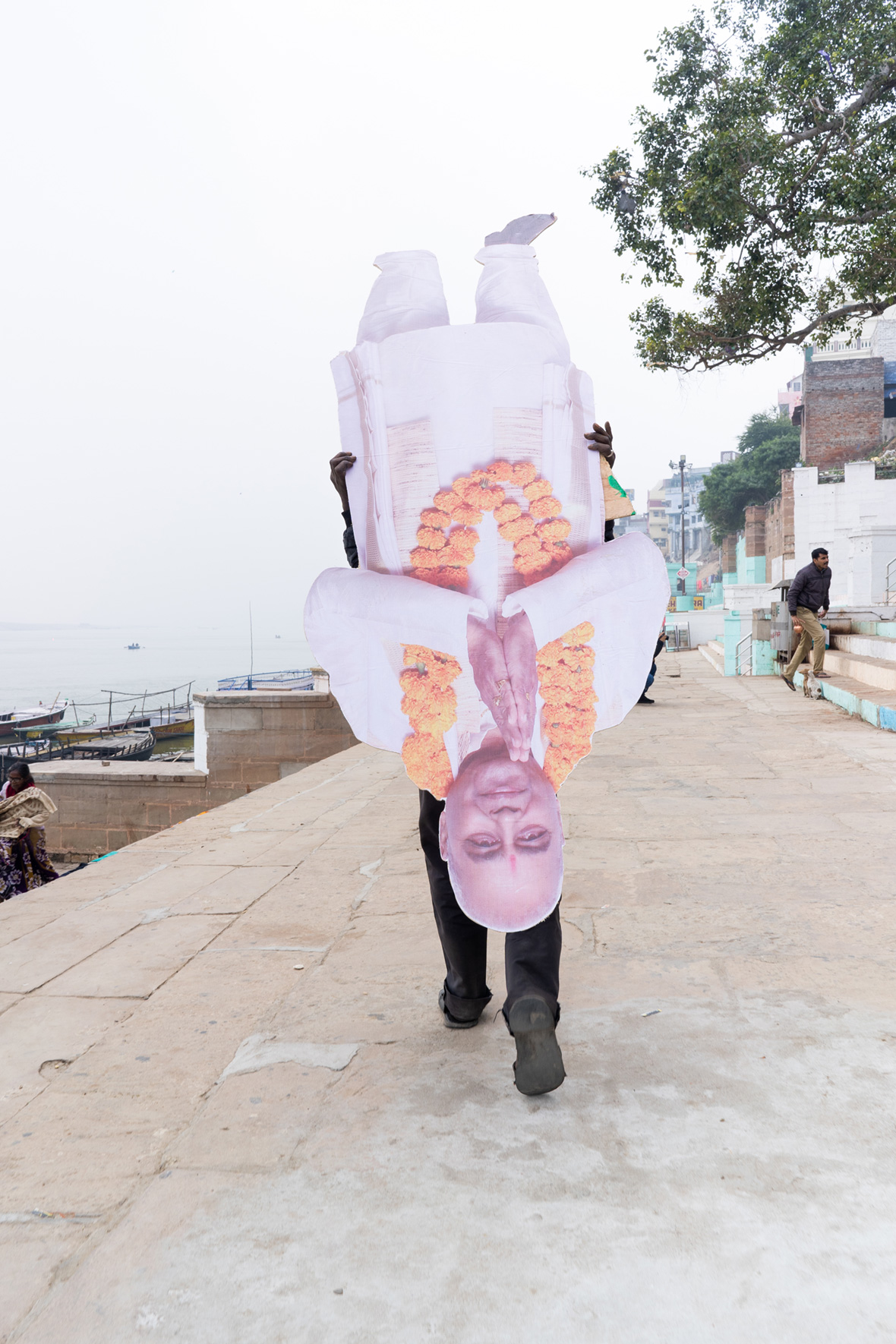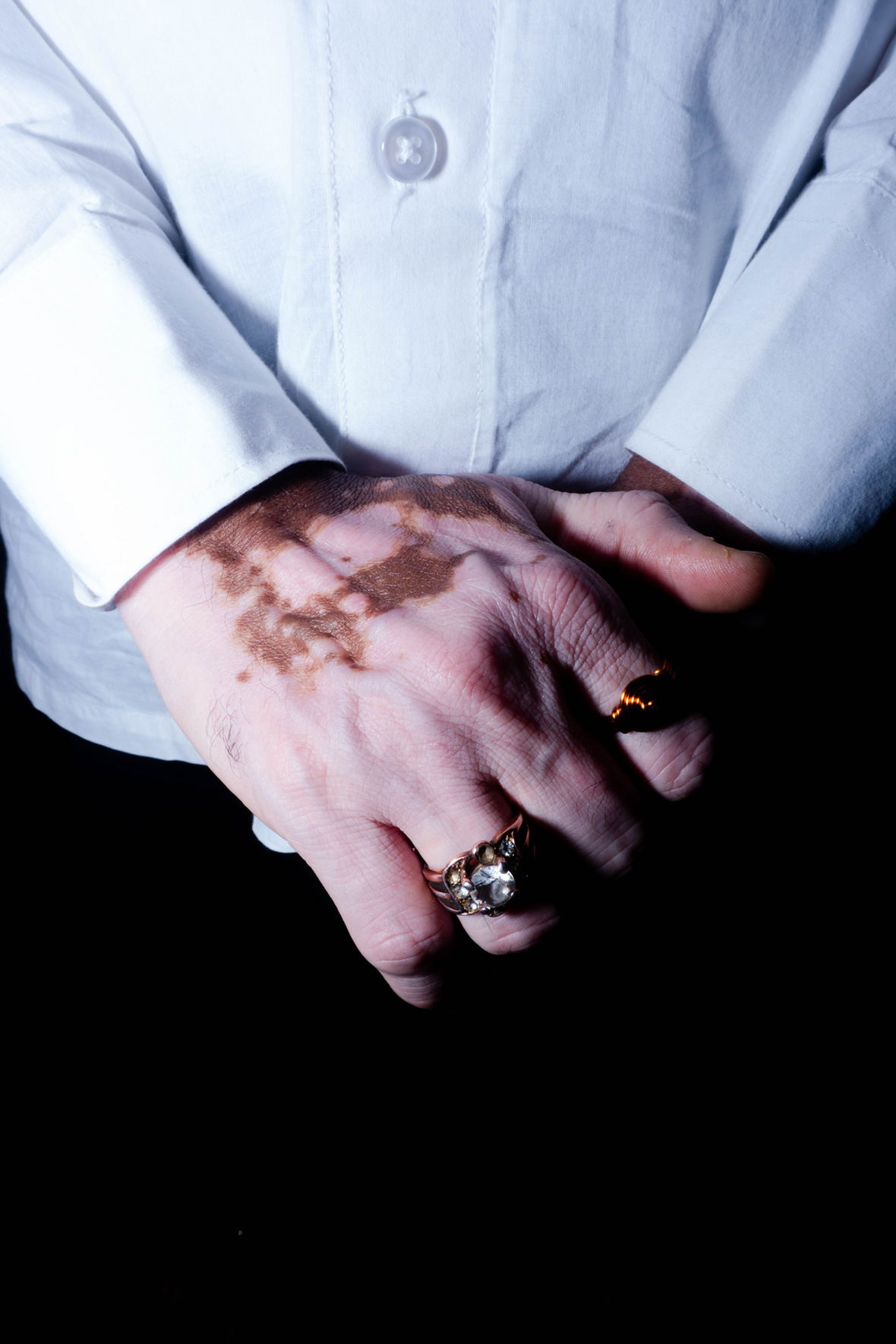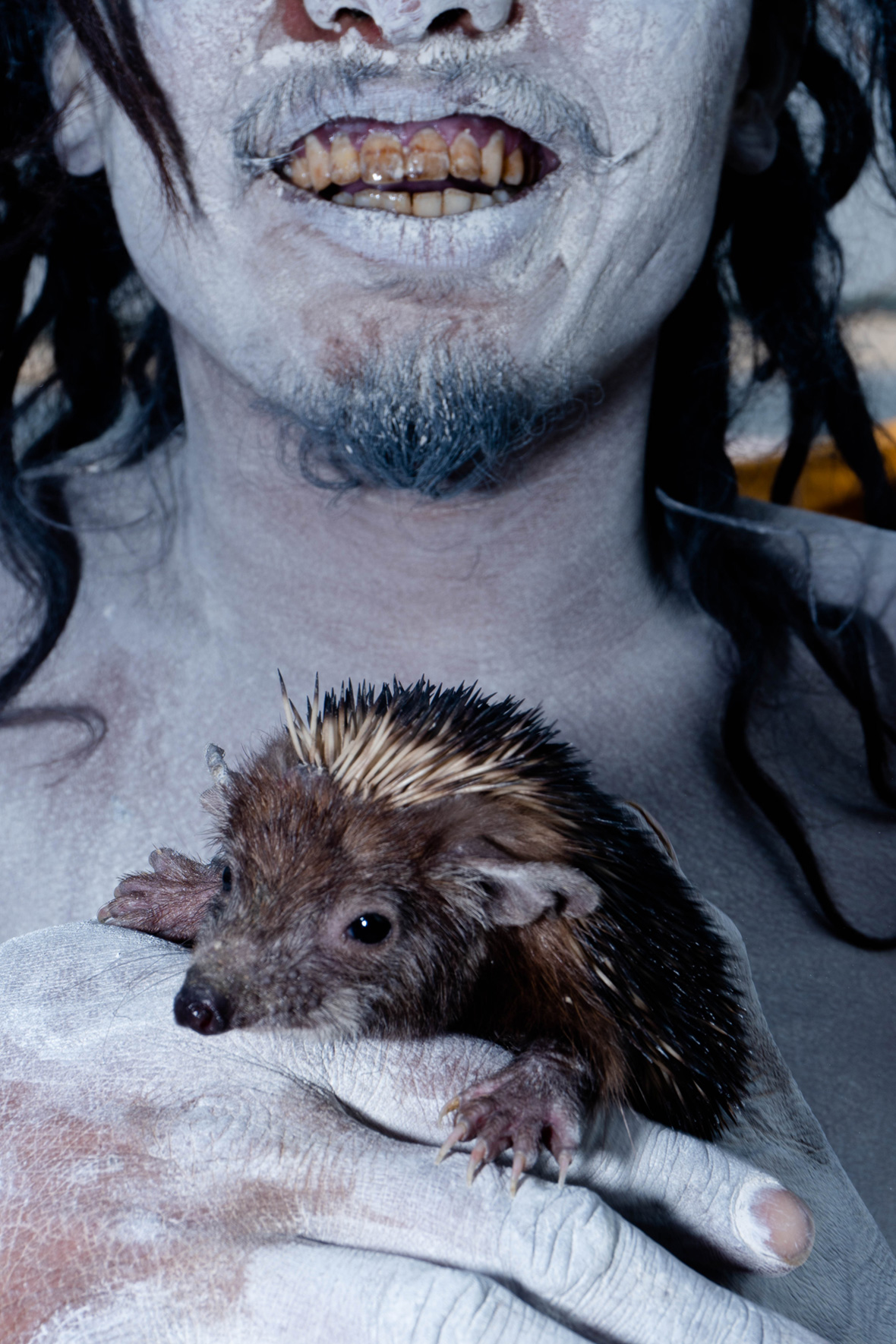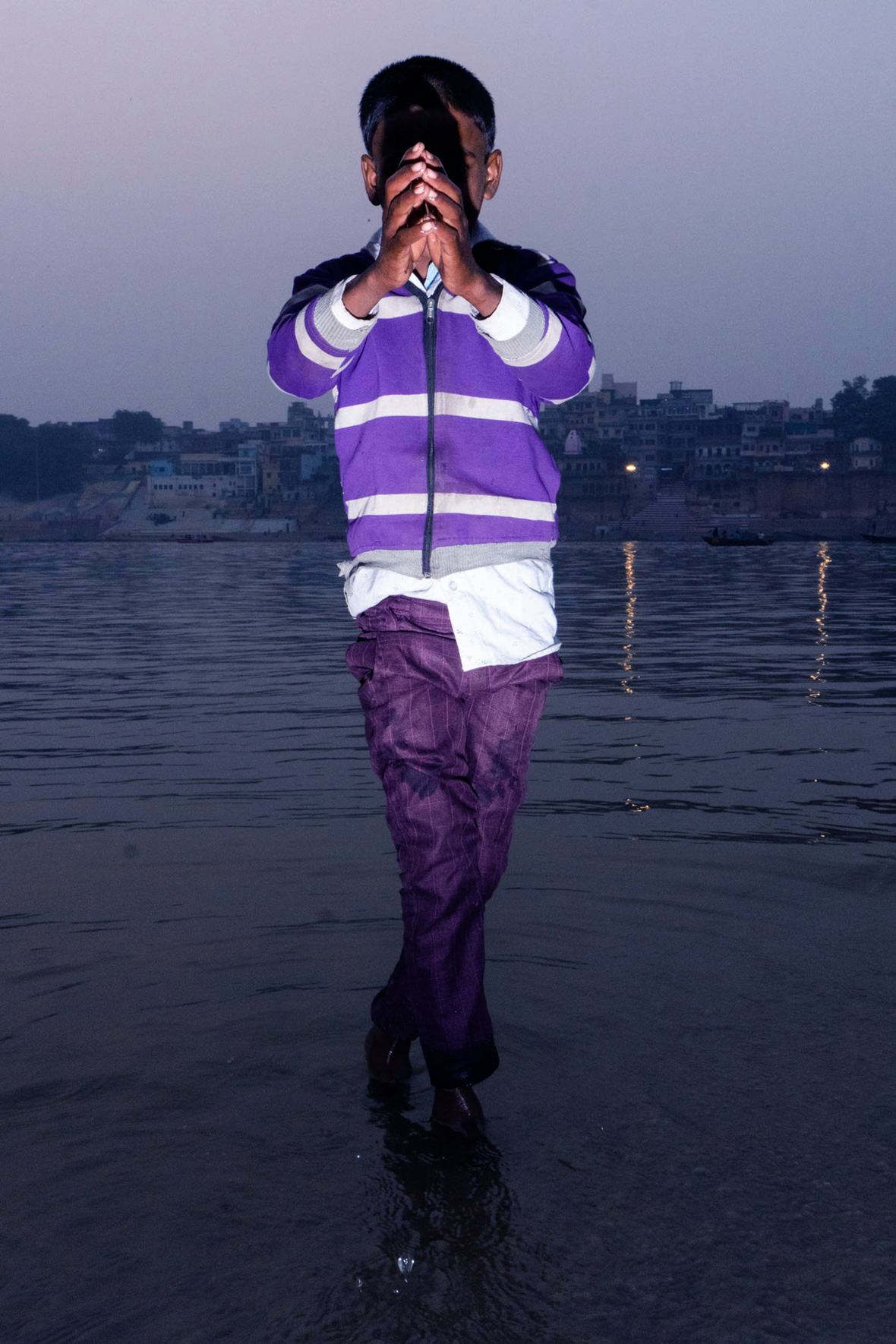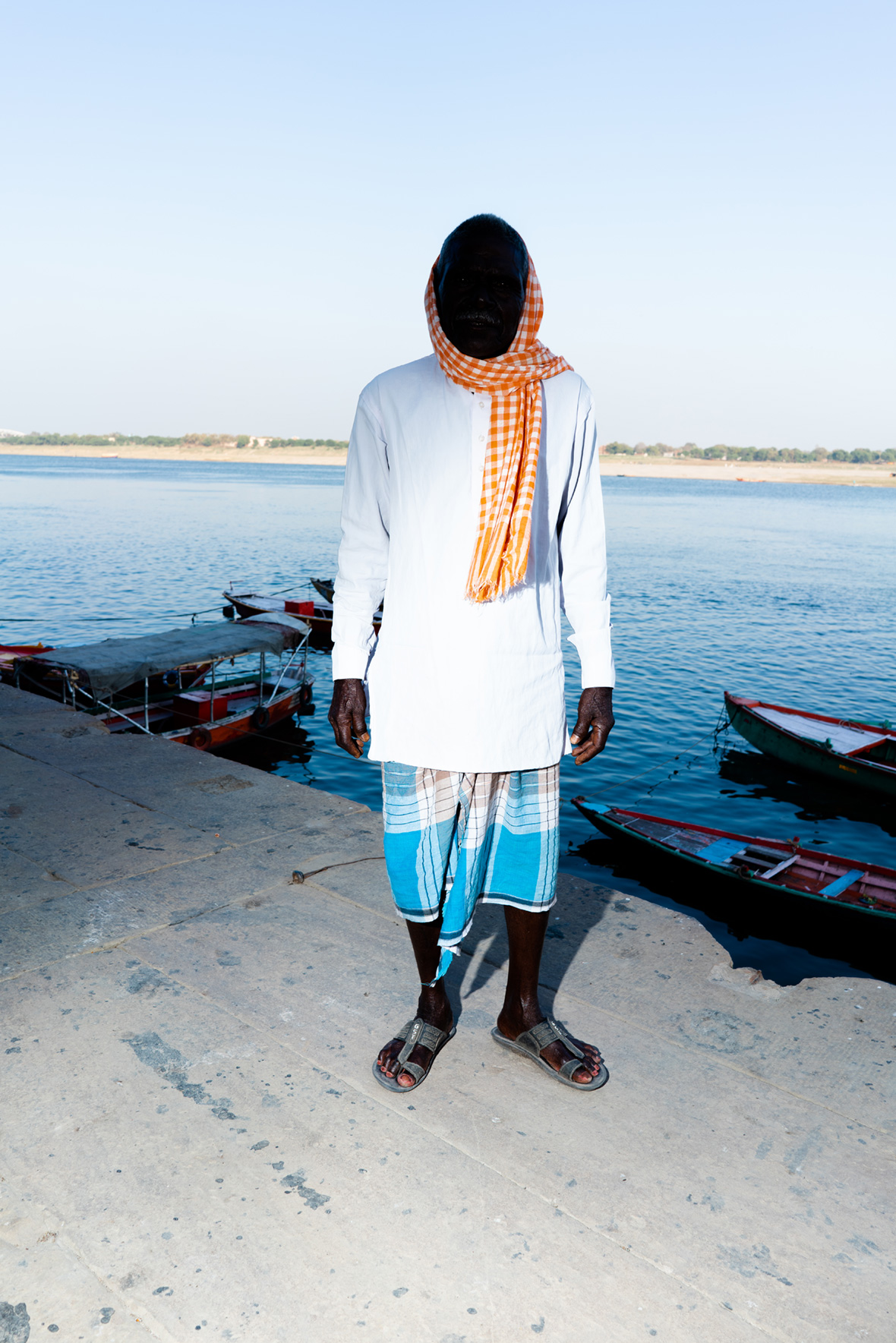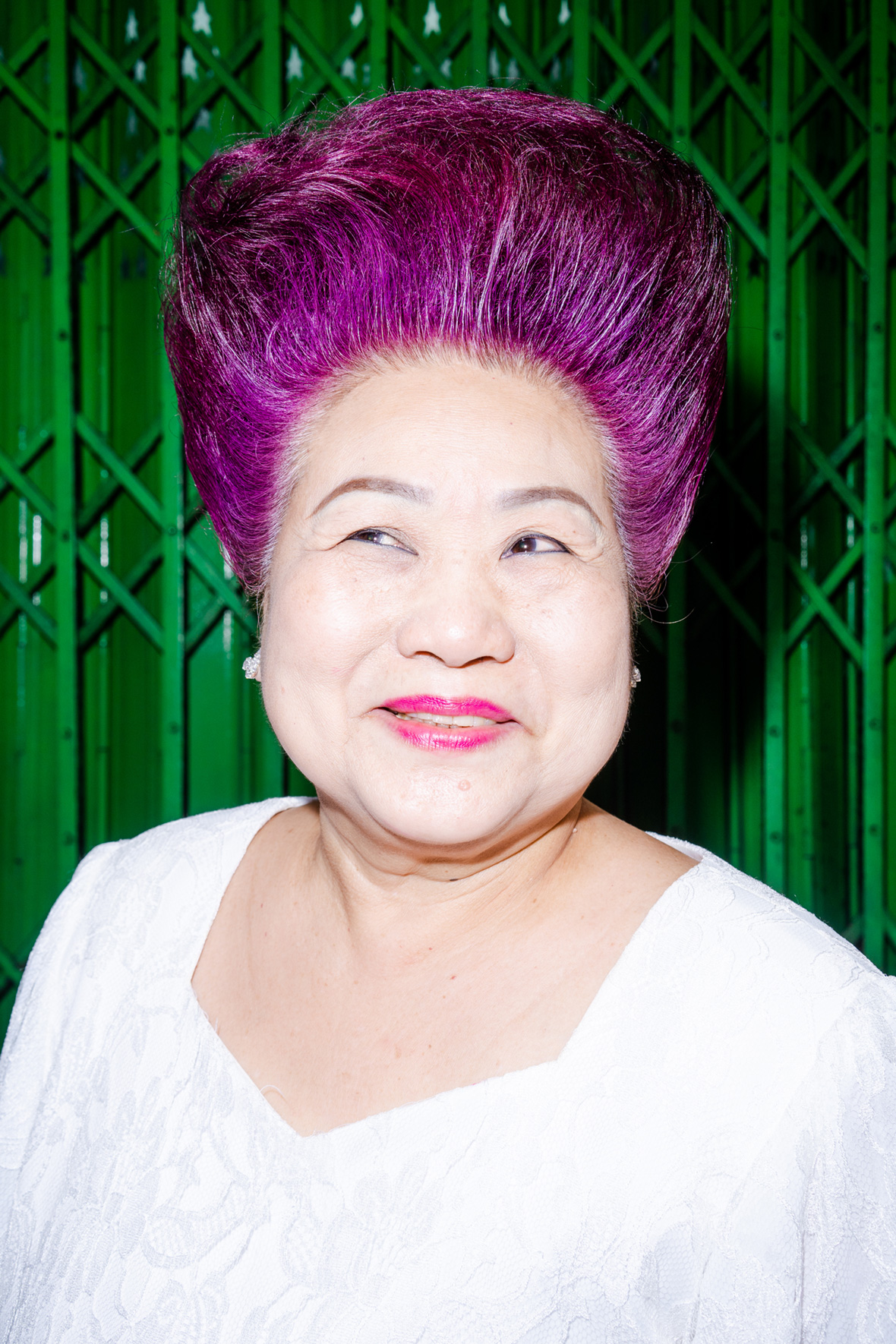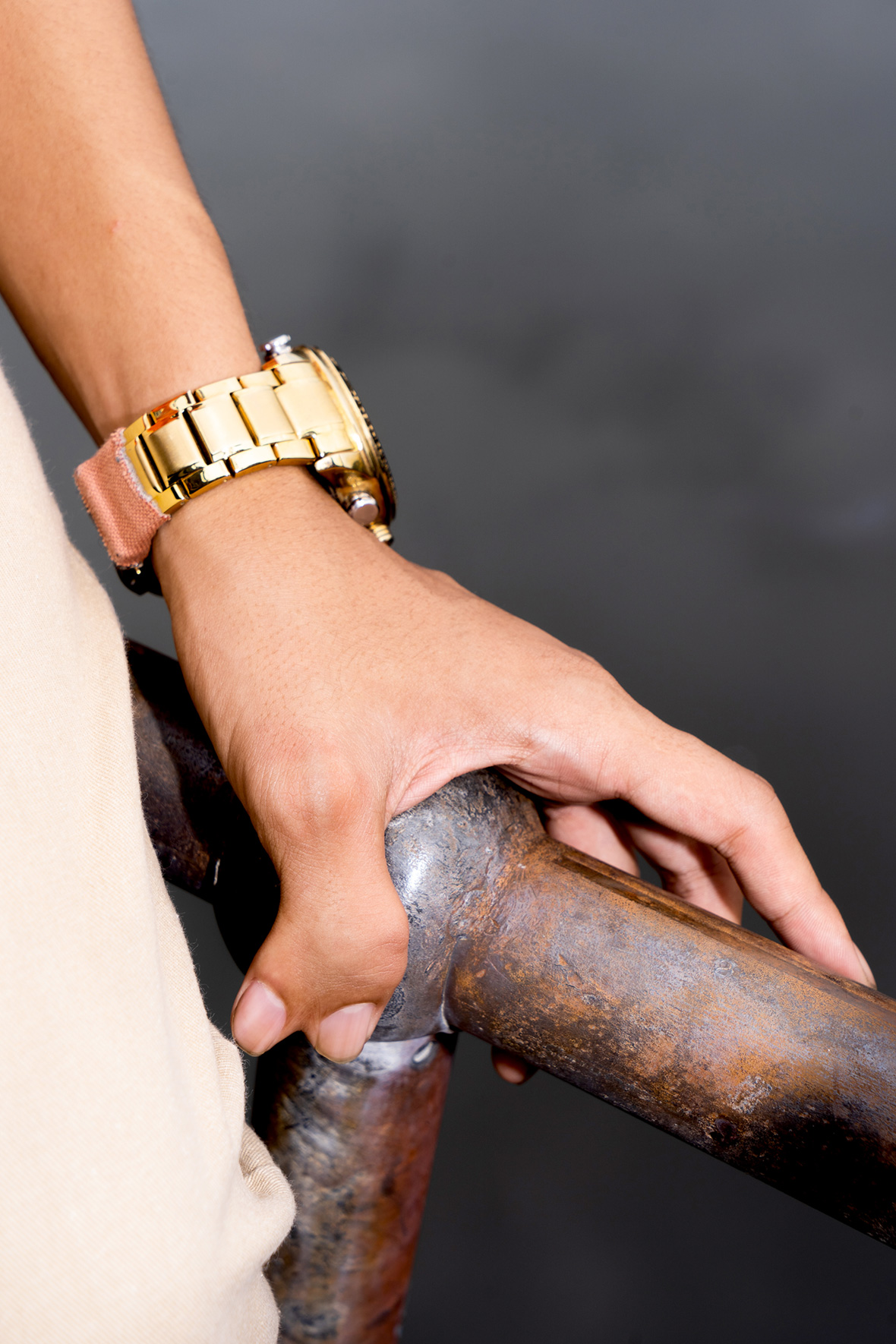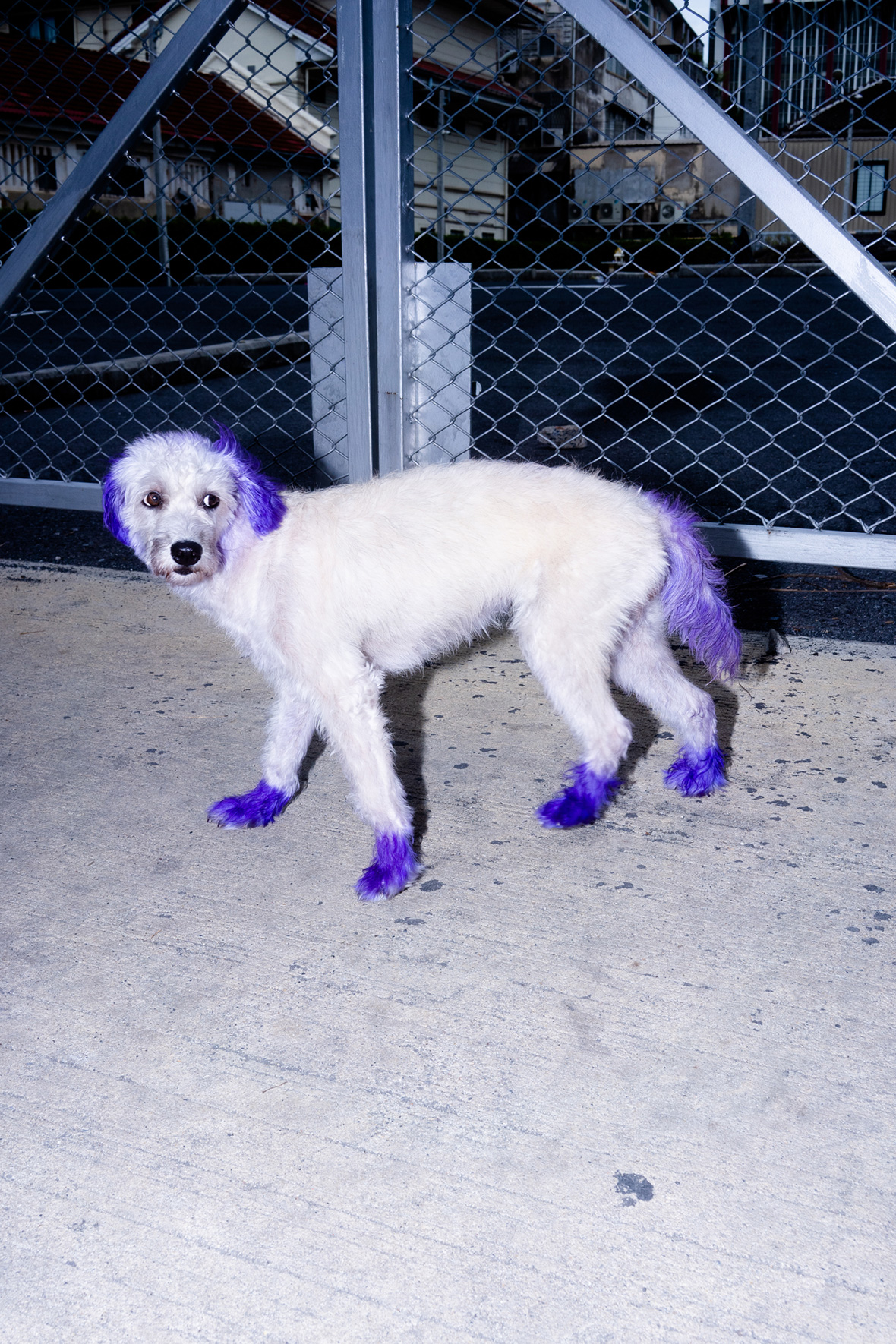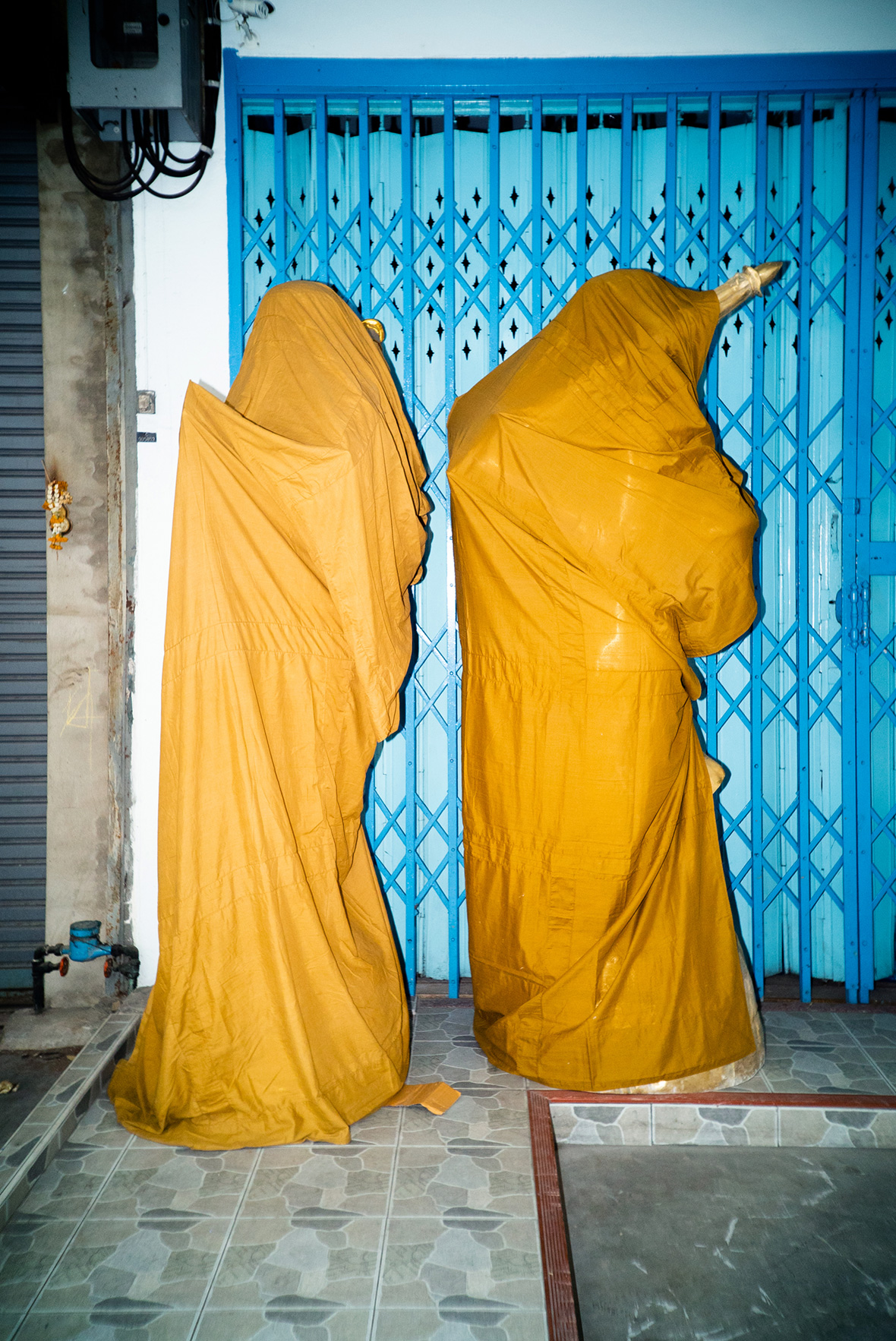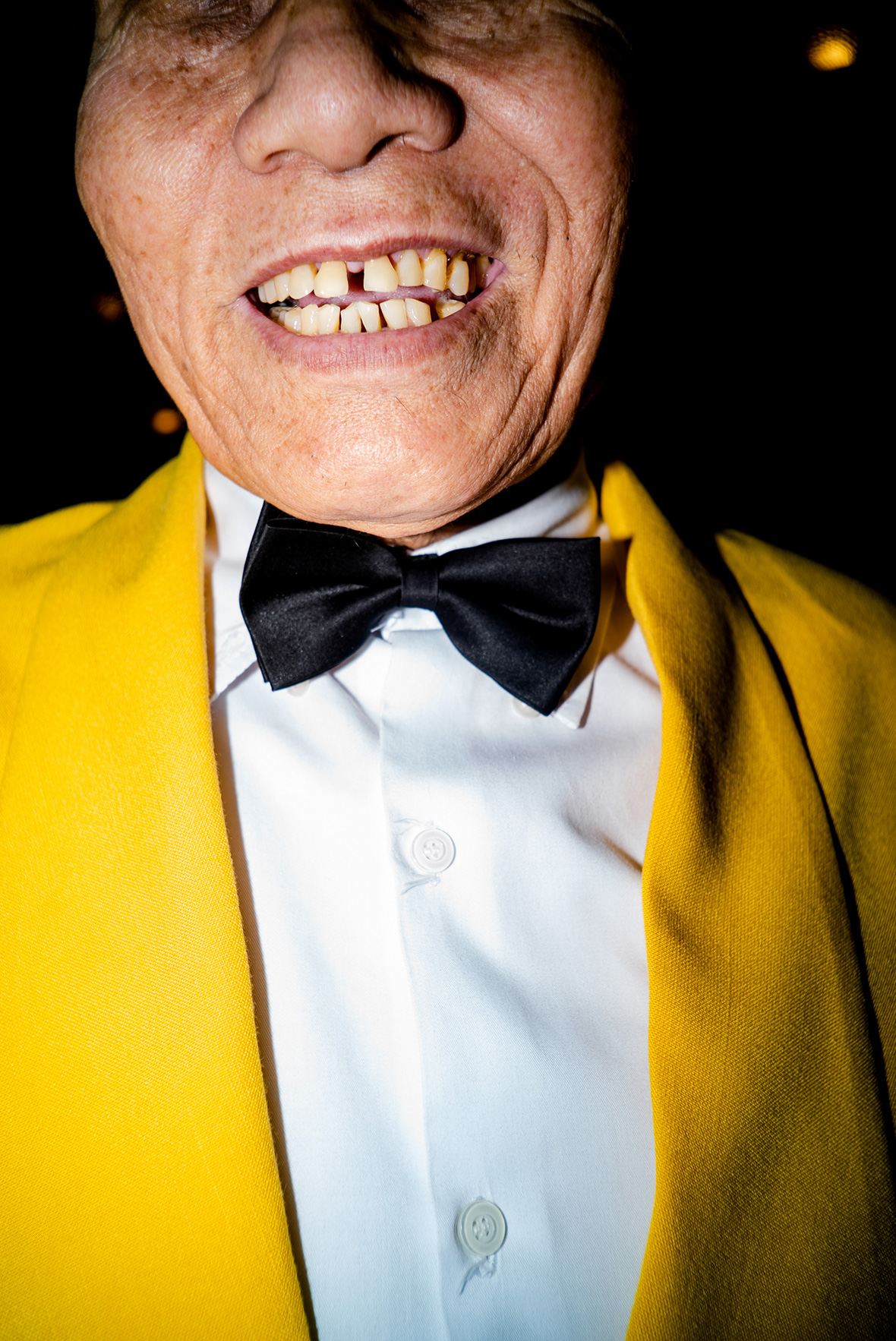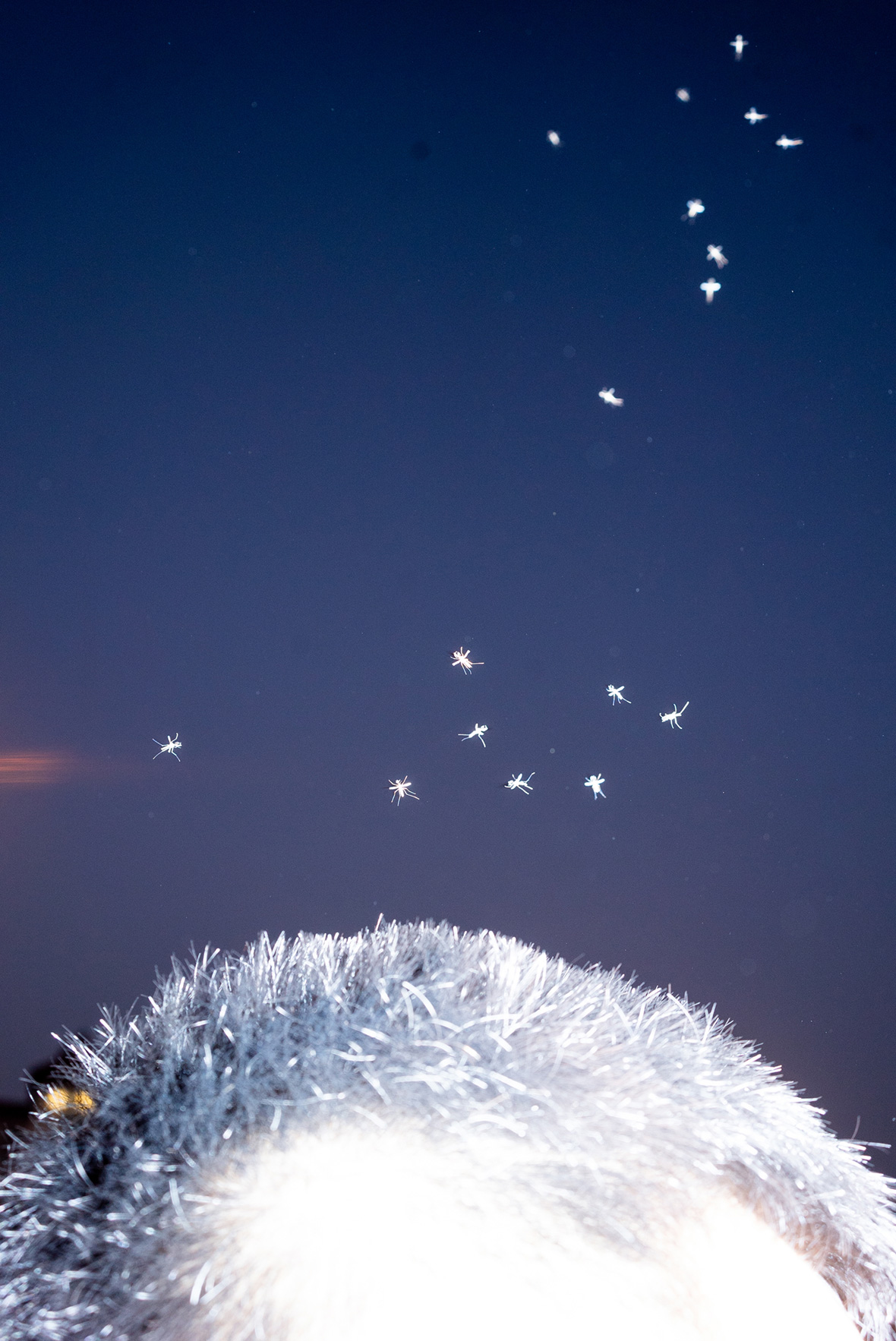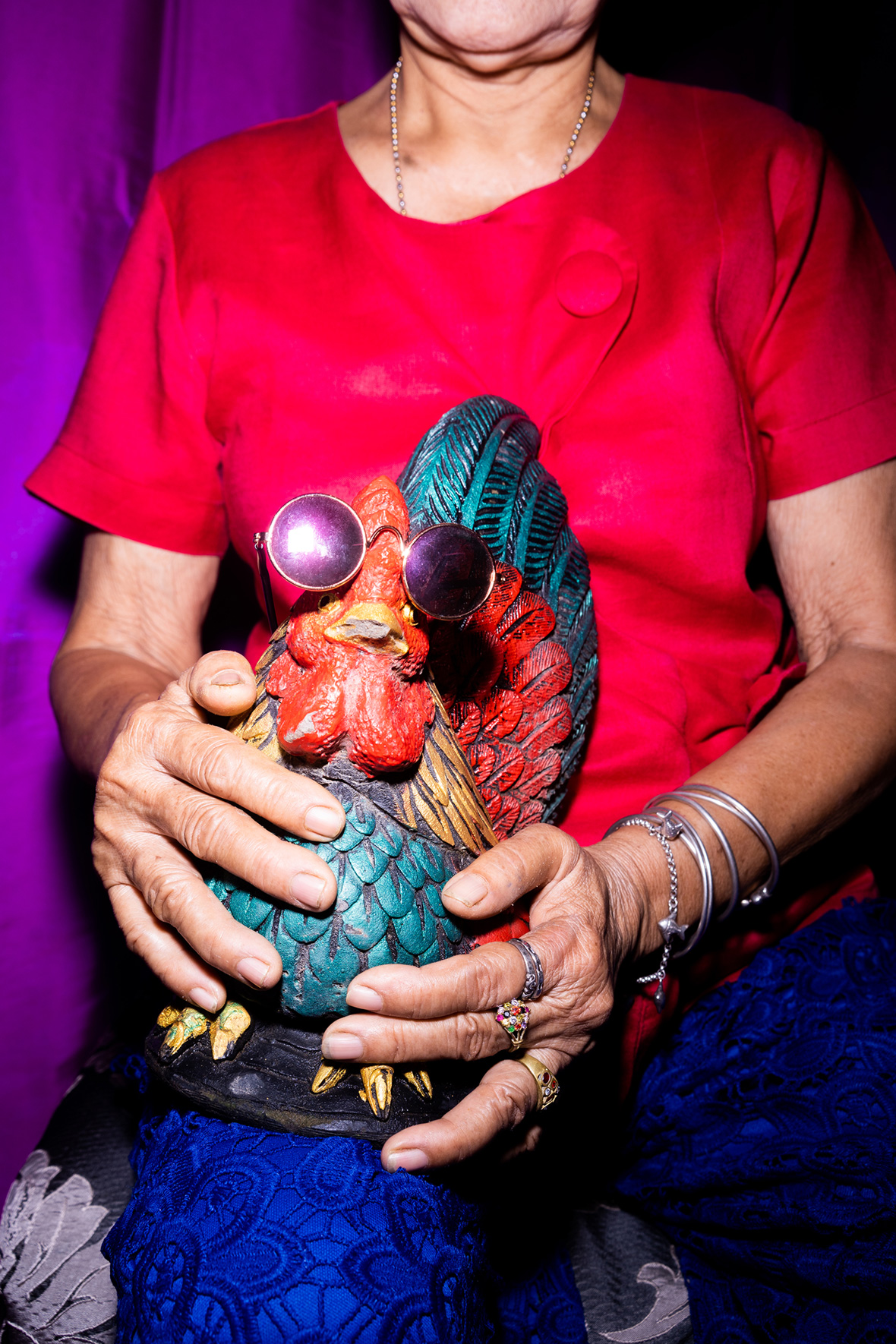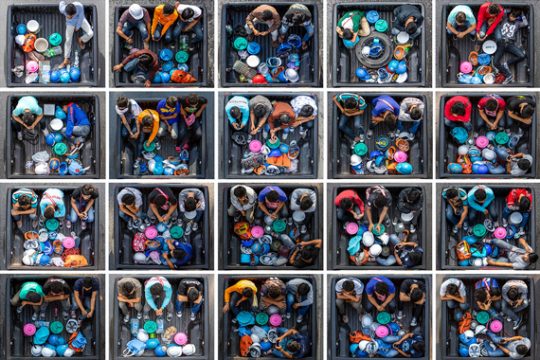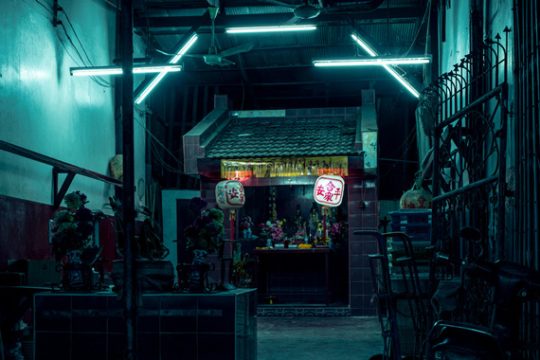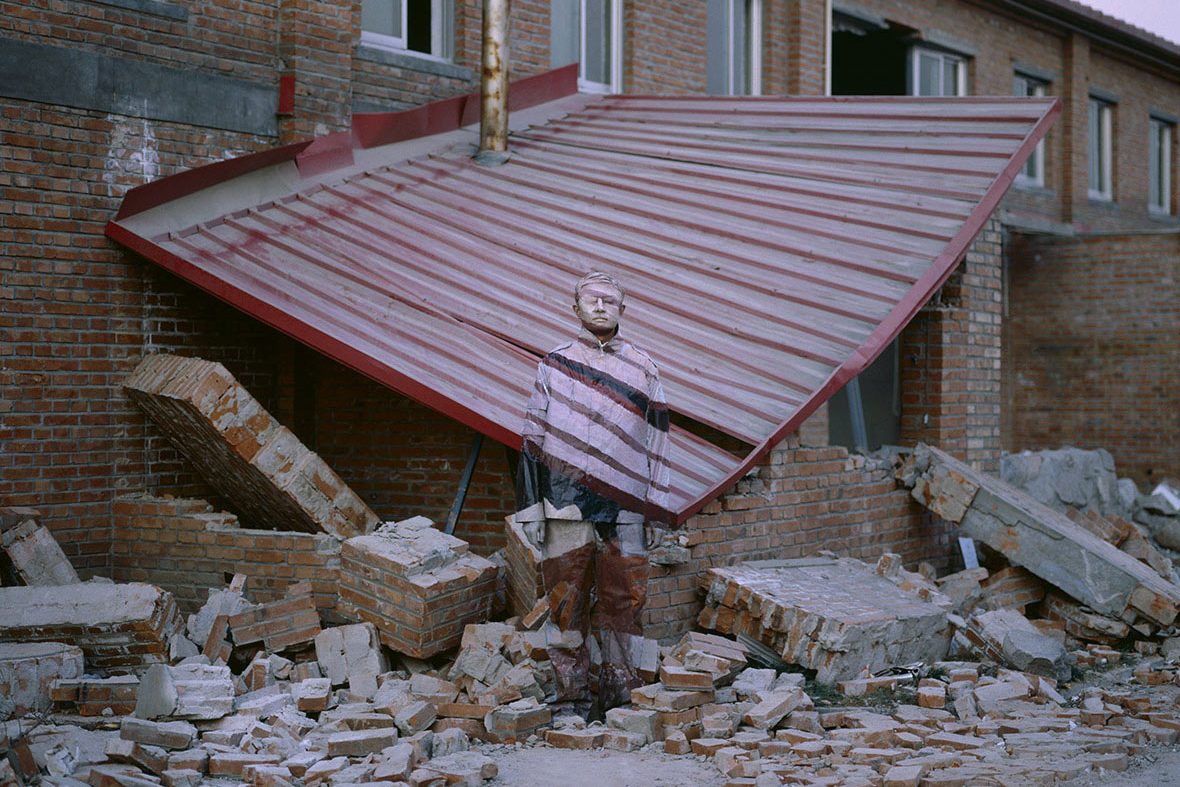
In the fall of 2005, Suo Jia Cun—Beijing’s art village—was ordered to be demolished by the local government. The residents were furious, including artist Liu Bolin, who considered the village home. Despite the outcry, the village was quickly reduced to piles of brick and concrete. Liu, unlike other residents, decided against voicing his frustration, at least in a verbal sense. He instead covered himself in paint, camouflaging with the rubbles he once called home. His disappearance speaks to the idea that, by razing his home, the person who he once was also erased.
This performative piece was a creative turning point for Liu, who previously worked as a sculptor’s assistant. From that point forth, this vanishing act would become the sole focus of his artistic endeavors, which has now culminated in a decade-spanning series that meditates on the relationship between individuals and the world at large titled Hiding in the City.
时间拔回 2005 年的秋冬之交,北京索家村国际艺术营一片肃然。当地遭到政府的遏令强拆,让不少安家于此的艺术家们深感愤慨,刘勃麟也是他们其中一员。曾为艺术家遮风挡雨的栖身之地,转眼变成断壁残垣,人作为个体的情绪在现实面前显然无力,一刻间四下哗然。刘勃麟在众人中选择了无声的反抗方式 —— 他双脚伫立在残垣断壁之上,将颜料在全身涂绘成身后的景象,画面的主角隐形在背景中,好像自己的一部分灵魂与索家村一同废去。对于雕塑背景出身,并在当时从事雕塑创作的刘勃麟而言,索家村 “隐身” 的作品无疑是一次创作上的突破,引发人们对现实和人之间关系的思考,也开启了刘勃麟一系列长达十余年的作品系列 ——《城市迷彩》。
Throughout the series, Liu is dressed in plain attire and painted from head-to-toe to assimilate with the surrounding setting in true chameleon fashion. Without close scrutiny, he can be tough to spot in the photos. “With my partial invisibility, I look to invite discussion on the meaning of existence within certain contexts, along with the connection between a person’s inner world and reality,” he explains. “In my works, I represent everyone.”
画面上,刘勃麟的面庞和身穿的军装被涂上厚厚的颜料,让颜色与背景不尽相同,有时需要仔细辨认才能看出人物的轮廓。刘勃麟解释说道:“我希望通过这种若隐若现的形式,来探讨人在特定场景下存在的意义,以及人的精神层面与现实之间的联系。作品中的我可以代表任何人。”
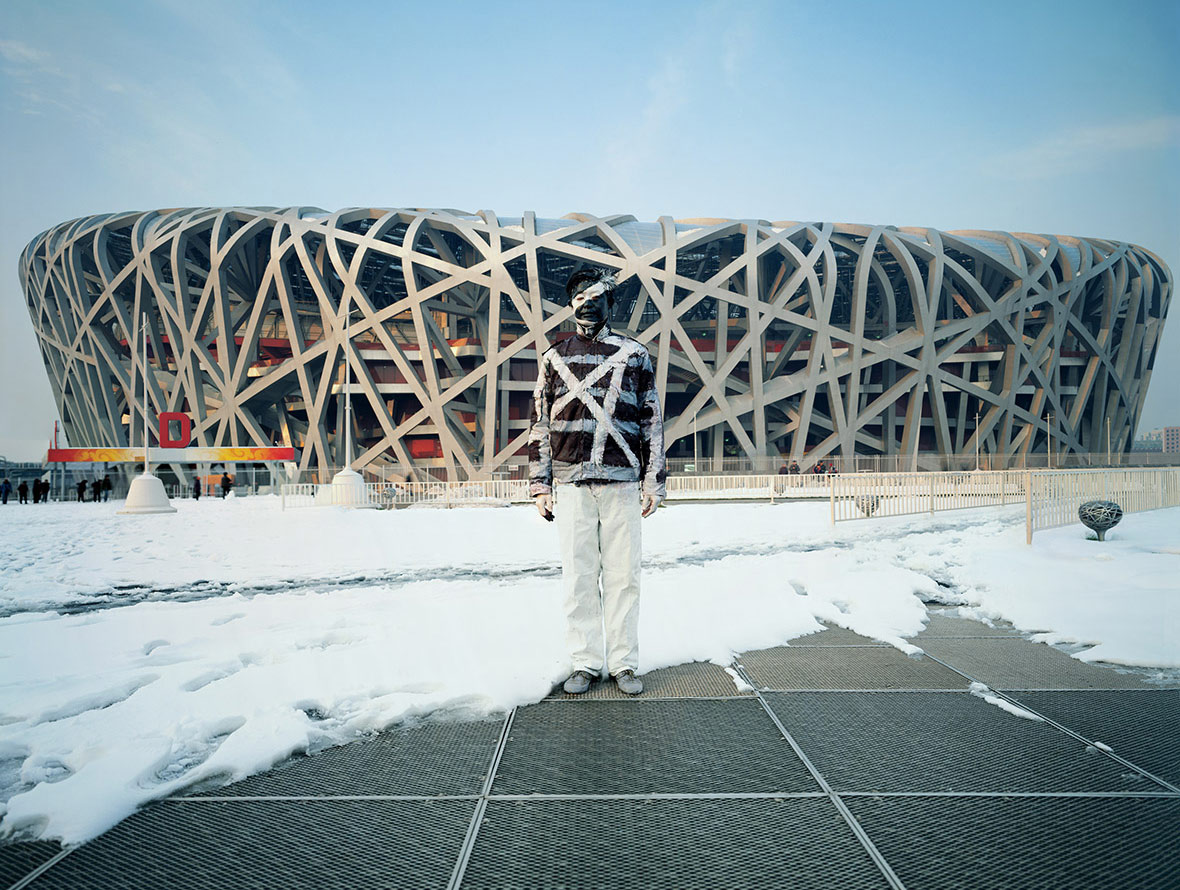
Becoming invisible isn’t that simple. When planning one of his vanishing acts, Liu studies the scene to decide where he’ll stand within the composition. Once that’s decided, he must remain stationary as an assistant paints him to match the environment. Depending on the complexity of the surrounding scene, this means standing still for hours or more—his longest project took four full days.
But aside from the amount of time needed, the location can also affect the level of difficulty. When working outdoors, weather conditions can be major hurdles. To date, Liu considers the toughest project as the one that took place in front of the Beijing National Stadium in 2009. Under a brutal snowstorm where temperatures sat firmly below 0 degrees Celsius, he stood still while paint froze atop his skin as they worked. “The longer you do something, the better you want to do it,” he says. “You want to overcome the challenges, and defy the limitations imposed by destiny itself.”
想要在身上作画并实现 “隐身” 的效果并不是一件容易的事。在确定好背景之后,刘勃麟做的第一件事是构图,固定好人物和相机的角度及位置。然后一动不动地配合助手,完成身上的绘画。倘若身后的背景简单,通常几个小时就可以完成一幅作品;如果背景较为复杂,则需要原地站立很久,刘勃麟最长一次创作甚至持续了四天的时间。而室外创作则需要克服更多困难,还要结合光线、天气等客观因素。
2009 年刘勃麟在北京鸟巢前完成的作品,被他描述为最艰难的一次经历,创作现场漫天大雪,最高温度不过零度,颜料甚至瞬间在皮肤上凝固。而对于十五年的创作经历而言,刘勃麟说:“做一件事的时间越长,就越想把一件事做好,激发出与困难和命运抗衡的斗志。”
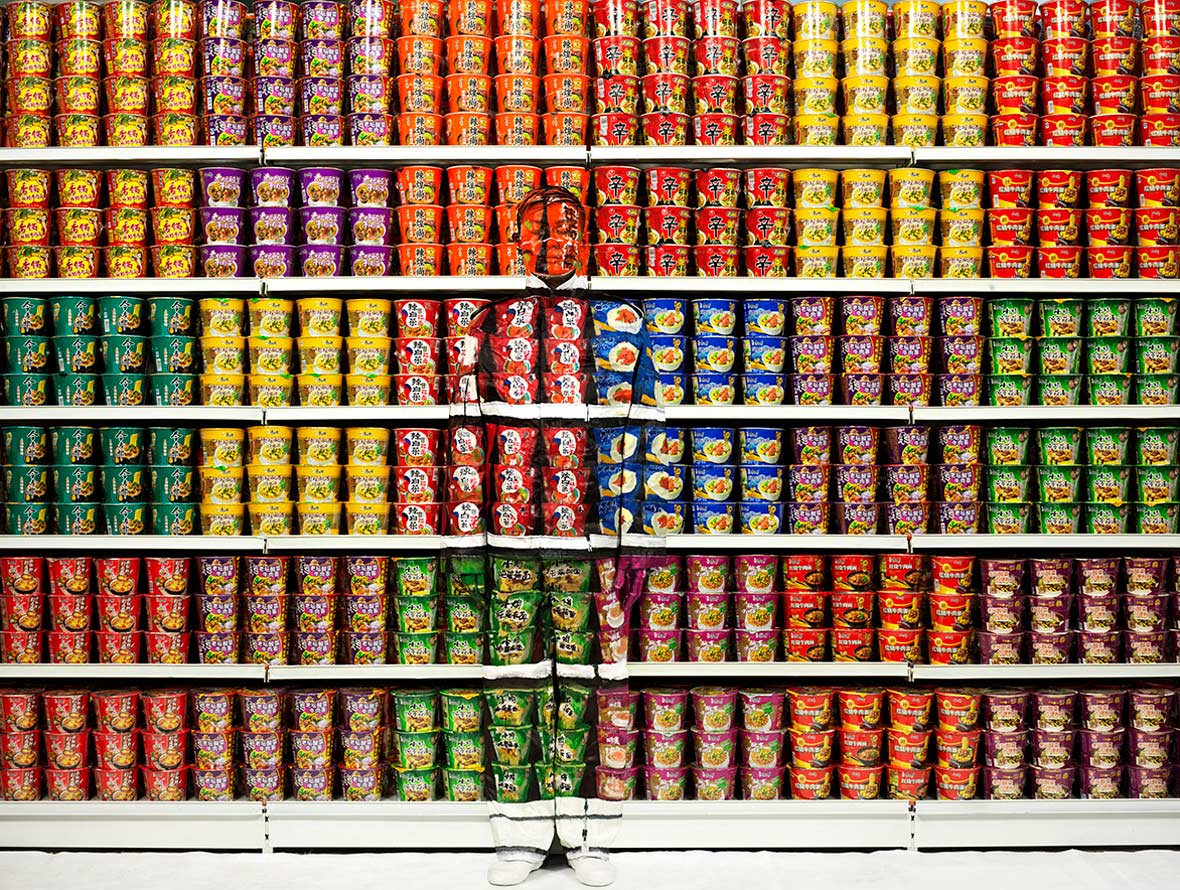
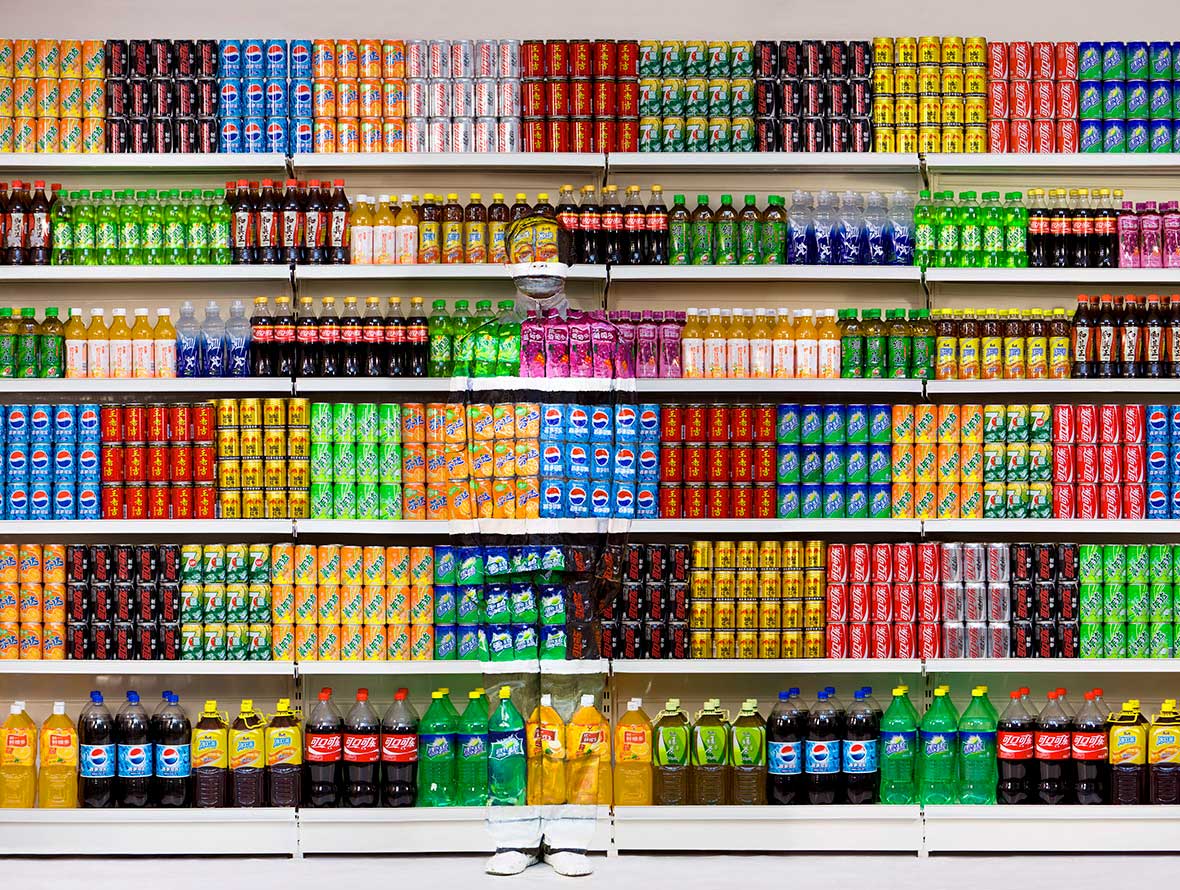
Born at the end of the Cultural Revolution, Liu bore witness to China opening itself up to the outside world. He saw firsthand the transformation of Chinese culture and the country as a whole. These experiences have given him a certain perspective and insight into the different sides of the country. After the demolition of Suo Jia Chun, his invisibility series was extended to address a variety of issues he’s observed within Chinese society, making use of settings that range from supermarkets and newsstands to abandoned warehouses and entire skylines.
In Ramen Noodles, for example, he calls attention to the scandal in which big-name instant noodle brands in China were discovered to have used fluorescent agents that cause cancer. In this piece, he disappears among supermarket shelves stacked neatly with the country’s most popular instant ramen brands. Through this, he reminds consumers that brand-name recognition and pretty packaging doesn’t offer any safety guarantees—there’s plenty you simply don’t see. No matter the subject matter, Liu’s art has remained uncompromising, adamant about sparking discussion and critical thought on matters he finds important.
生于文化大革命末期,刘勃麟是目睹中国从荒谬封闭逐渐走向开放的一代人,这也让他敏感地洞察到社会现状以及文化环境中日益凸显的矛盾。“索家村” 之后,刘勃麟将创作延伸到社会和生活的方方面面,从超市、报亭到废弃工厂和各种地标性建筑等场景纷纷出现在作品中。其中一幅名为《方便面》的作品,他将自己隐身在超市中方便面的货架上,以此来回应方便面包装 “荧光门” 事件。以此发散开去,他也希望可以通过这样的方式,提醒人们注意隐匿在食品光鲜亮丽的包装背后,依然潜在的安全问题。回望第一部在索家村完成的作品,反抗、反思与不妥协的精神,被一直延续了下来。
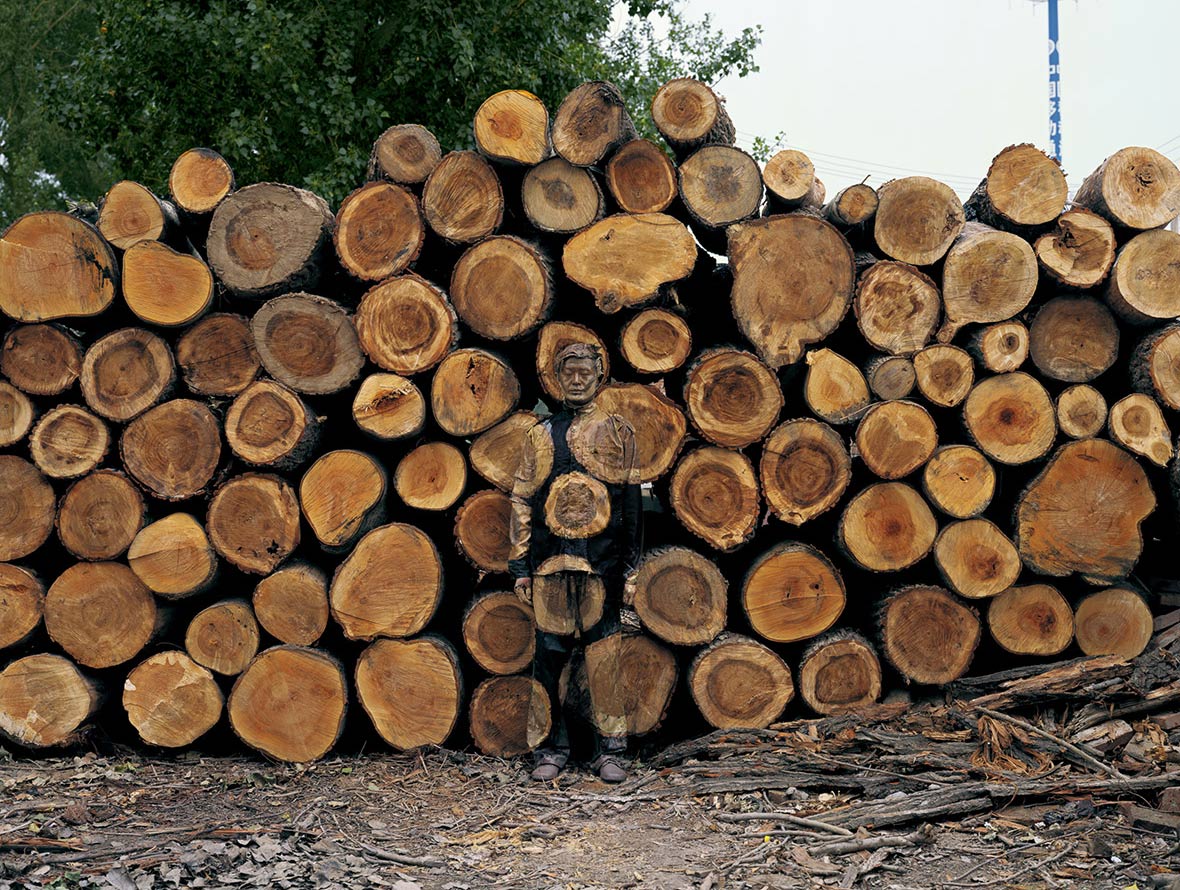
A spirit of defiance is the common denominator across Liu’s work. Hiding in front of a factory’s lumber pile, he casts a critical gaze at the relationship between man and nature; camouflaging with magazine racks, he confronts today’s oversaturation of media and its contribution to indecision; and blending in with famous works of art, he questions the connection between people and art. “An artist has the responsibility to continuously push boundaries and oppose the status quo so that they can bring something new to the table,” he says. “By challenging conventions and perception, I want to question the validity of the things we’re accustomed to.”
Topical matters and real-life events are constant fonts of inspiration for him. Pop culture, natural disasters, and even human evolution have all served as creative fodder. “As a Chinese artist, I’m interested in furthering the heritage of Chinese art, but I also travel around the world, paying attention to the global zeitgeist, and the cultural differences that divide people,” Liu says. “Doing this, I can observe from a more subjective perspective, tap deeper into my creative depths, and see the world with more clarity.”
如此细究一番,便会感觉到刘勃麟的作品携带着某种秘而不宣的“挑战性”。他会隐身在伐木堆和工厂前,用作品挑战人与大自然环境的关系;会站在杂志前,挑战当代社会中人在纷繁的文化世界中无法抉择的困境;也会站在艺术品前,向艺术品与人之间的联系发起冲击。刘勃麟说:“艺术家的职责之一就是要挑战艺术的边界和既有的模式,来建立新的审美模式。挑战我们约定俗成的概念和看法,我会把我们习以为常的背景重新拿出来质疑他的正确性。”
生活中的刘勃麟经常思考身边正在发生或已经发生的事件,文化经典、灾难、人类进化等问题,是他经常在作品中思考的方向。他人为这种思辨能力是艺术家需要具备的基本素质,而在作品中引起更多人的思考是他创作的初衷,他说:“作为中国艺术家,我要完成中国艺术里的传承,我又在全球游走,关注全球的文化现象和人类文明程度的落差和问题,这样,我会不断让自己抽离开,也会更冷静的审视这个世界。”
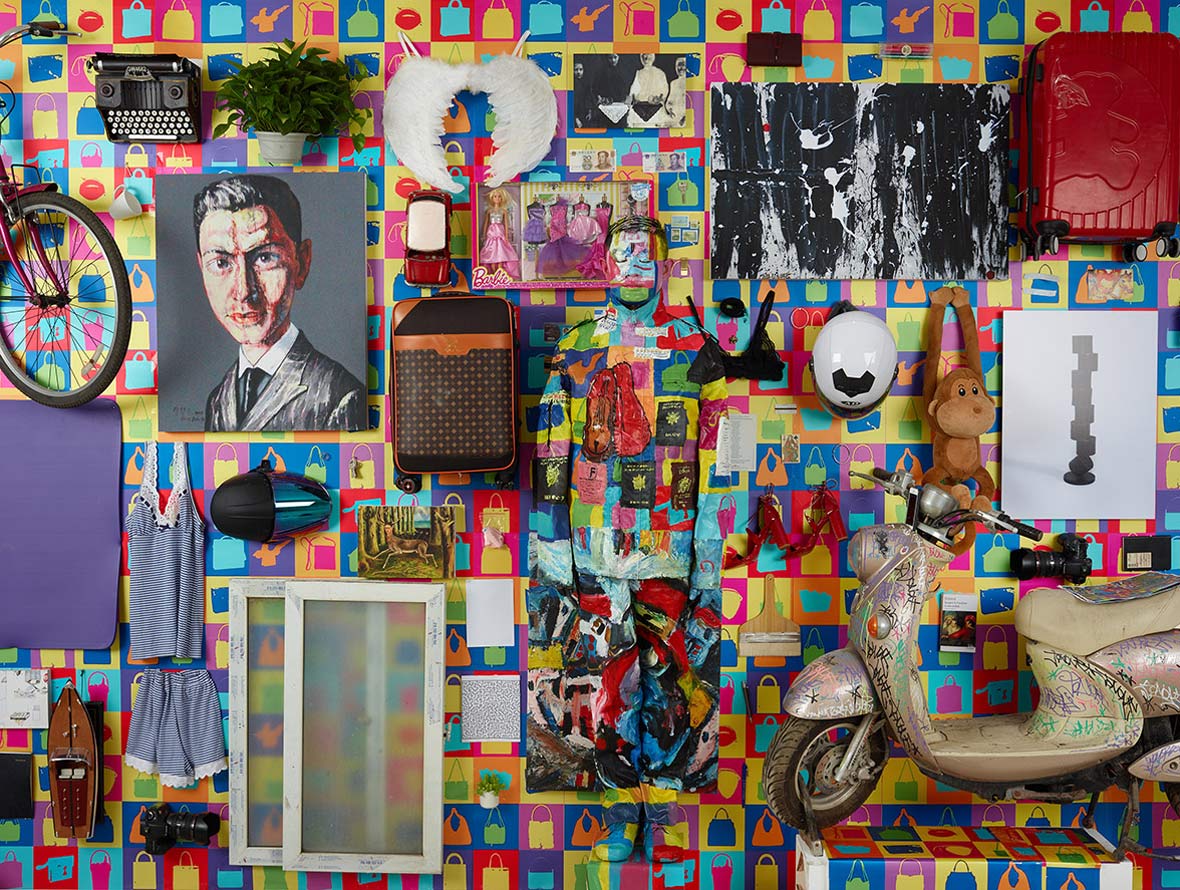
Being an avid globe trotter, Liu has kept extensive documentation of his travels, and he’s fed all of his observations back into his art. As such, his art has found audiences across the world, being showcased in exhibitions in Paris, New York, Milan, Rome, and more. His Chinese identity and heritage are hardly ever a point of focus for viewers or curators, as there’s a universality in the themes that he works in. “For the past decade, I’ve looked to understand different cultures around the world,” he says. “So now, I hope my work can speak to all of humanity, therefore, I’ve decided to become a global artist, not just a Chinese artist.”
刘勃麟游走于世界各地,并记录下随处让他可供思考的议题,随之带入自己的艺术创作中,他的作品也因此享誉全球。巴黎、纽约、米兰、罗马等许多国家的画廊都曾展览过他的作品。但他的作品并非以其国人的身份和中国元素而闻名,其题材本身和人类命运的主题显然更令人侧目。他说:“过去十多年里,我将自己浸泡在世界的文化中,我希望用自己的作品于全人类对话。因此,我给自己的定位是一个全球的艺术家,而不仅仅是中国艺术家。”
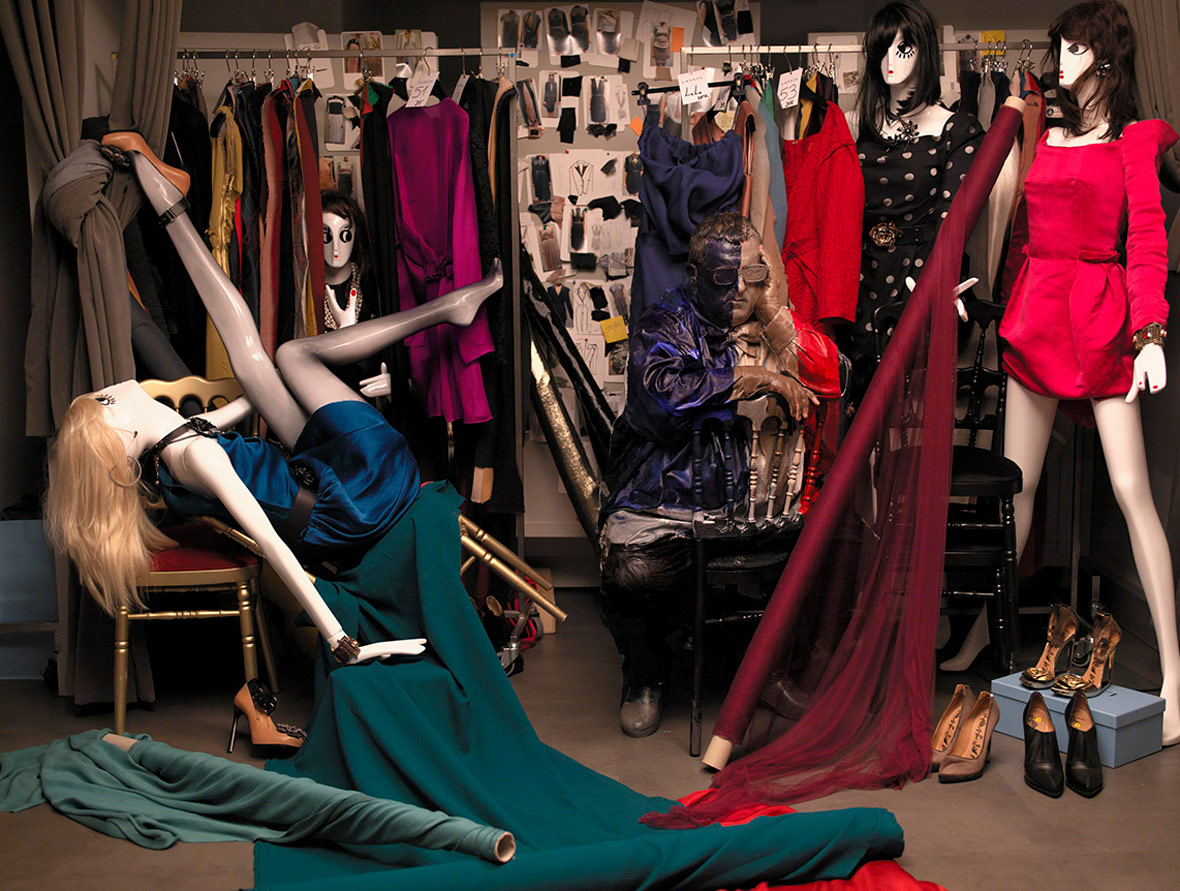
Most of Liu’s time is now spent working full-time as a university professor, but Hiding in the City is still far from over. He constantly reminds himself to stay grounded and continue broadening his worldview. “Humans are part of the universe, and all of the information and energy we output stem from cosmic vibrations,” he says. “As individuals, staying levelheaded and accepting the things that come your way is all we can hope to do. To put it simply, become who you’re destined to become.”
Liu’s works are ultimately a reminder—if we have the courage to face ourselves and the world head-on without compromising our core beliefs, then there’s no need to be afraid of being unseen.
现在,刘勃麟除了在大学任教之外,还会坚持这一系列的创作。他时刻提醒自己需要冷静且思辨地面对整个世界,他说:“人是宇宙的一部分,所有的信息、频率、都来自于这个神秘的宇宙震荡。我们作为个体,保持冷静来接引本来你就具有的东西就很好了。简单的讲,让自己成为应该成为的自己。” 隐形的是人,唤醒的是我们的心。刘勃麟的作品仿佛在告诉我们,时刻保持清醒面对自己、面对世界,而不被其他事物消耗殆尽,才能脱 “隐” 而出。
Like our stories? Follow us on Facebook and Instagram.
Website: www.liubolinstudio.com
Instagram: @liubolin
Contributor: Pete Zhang

